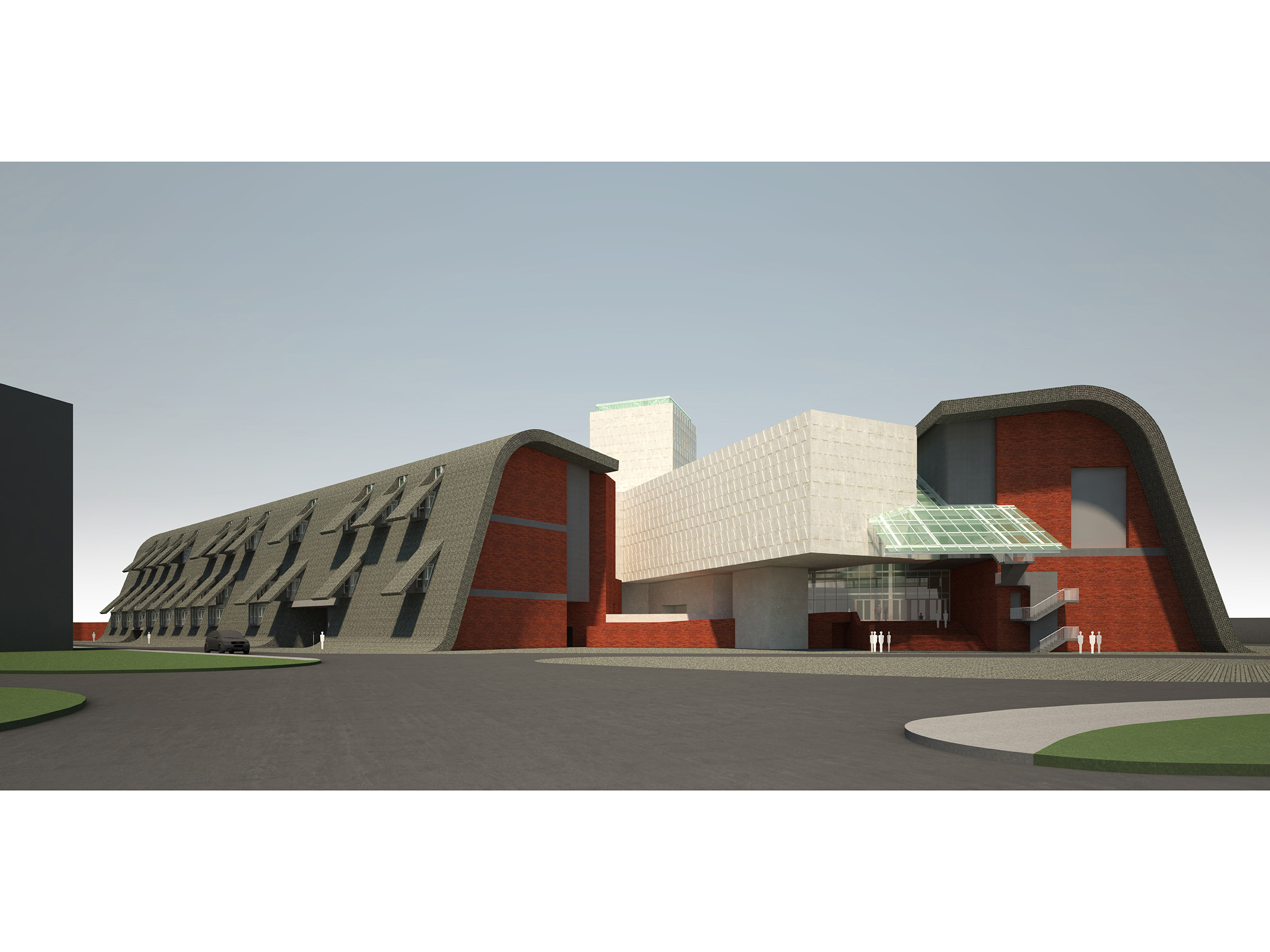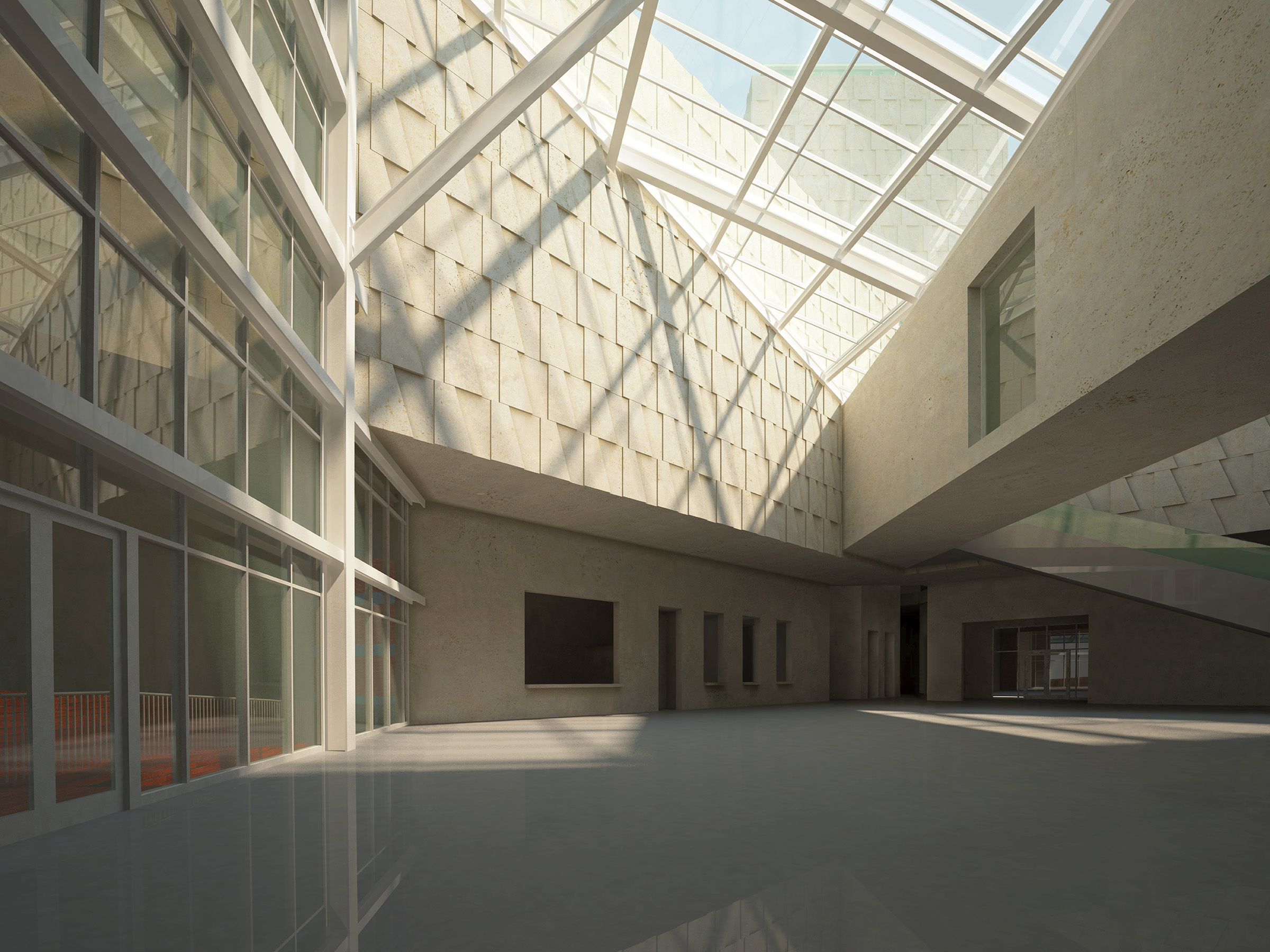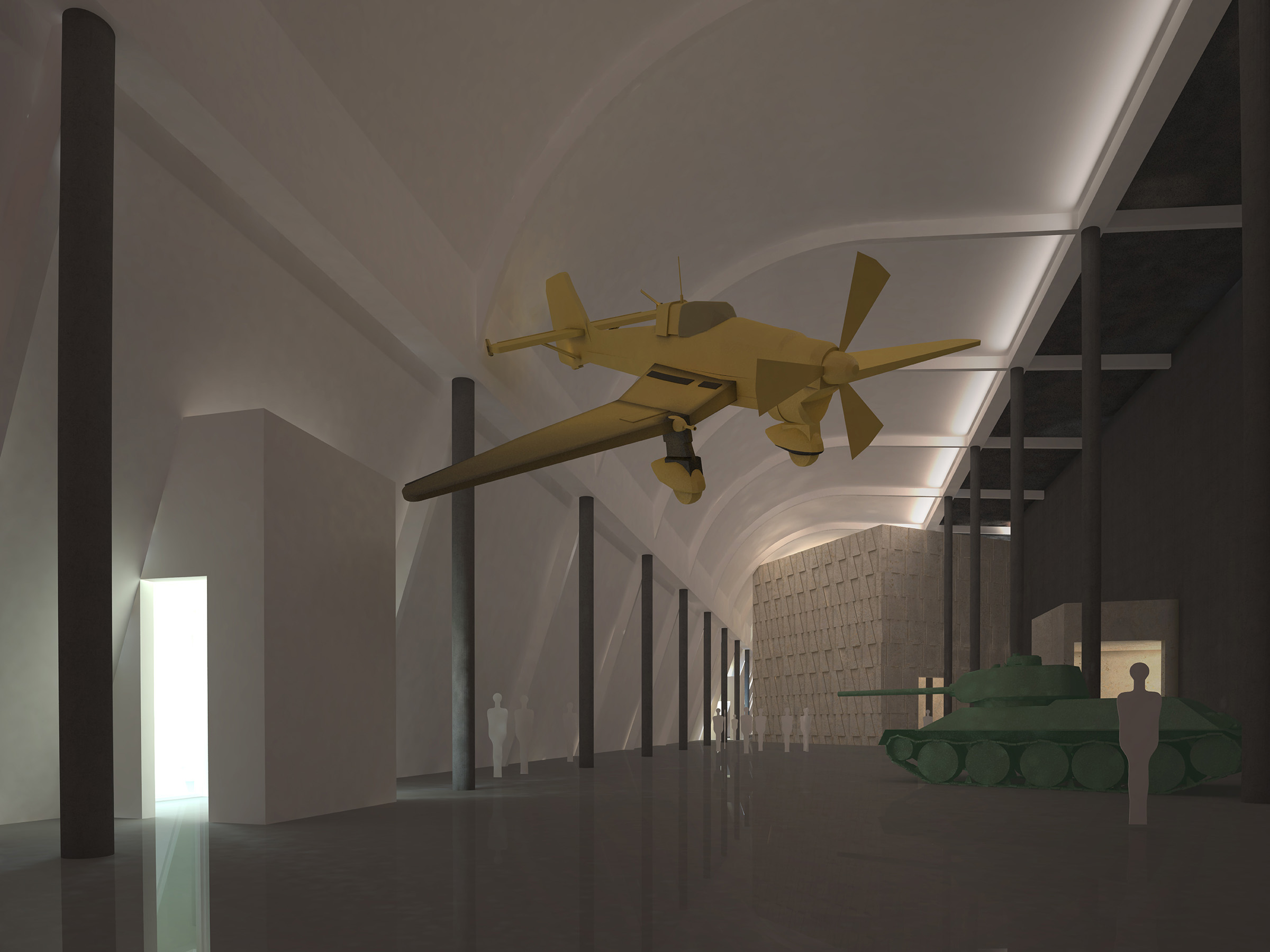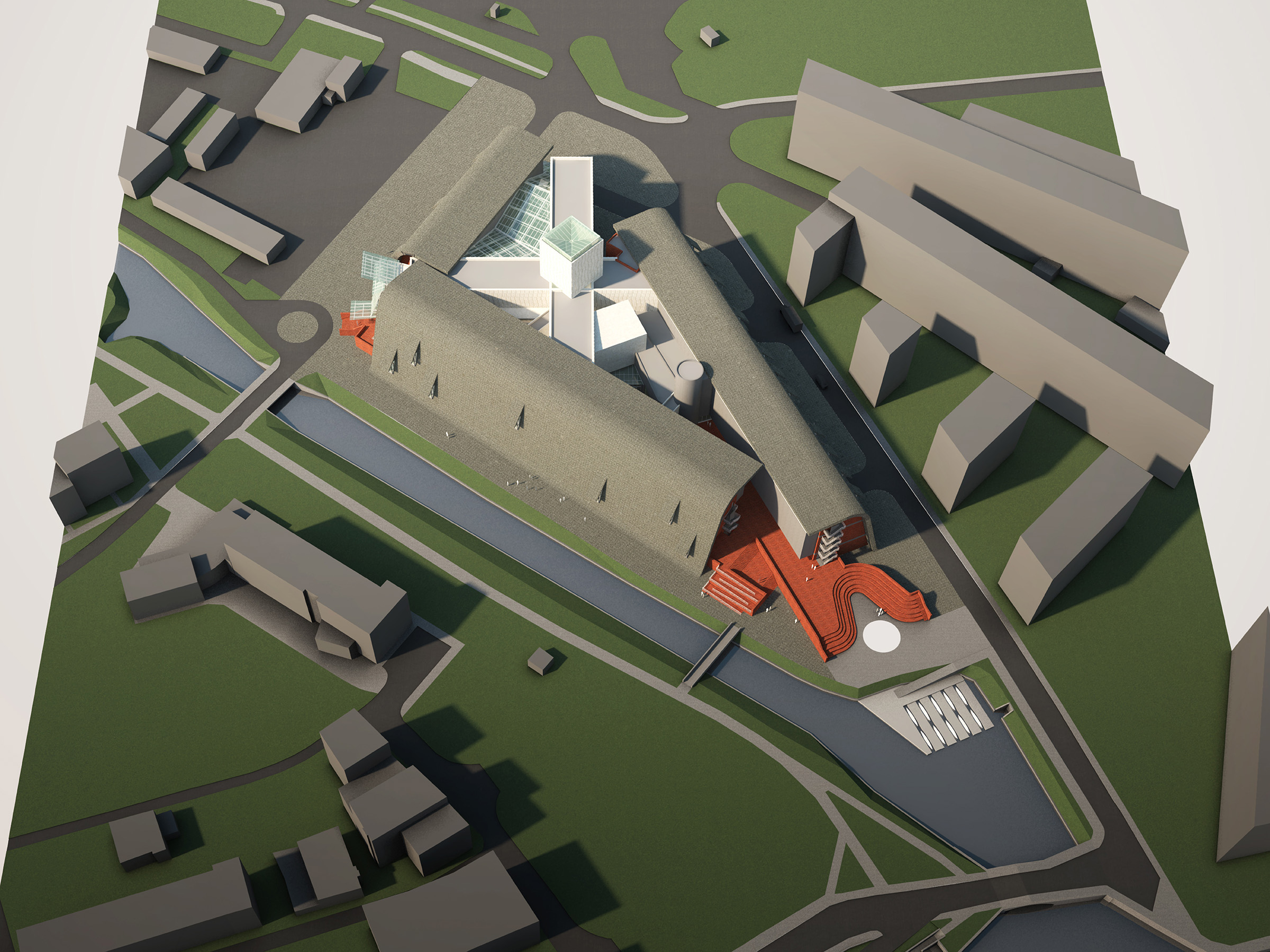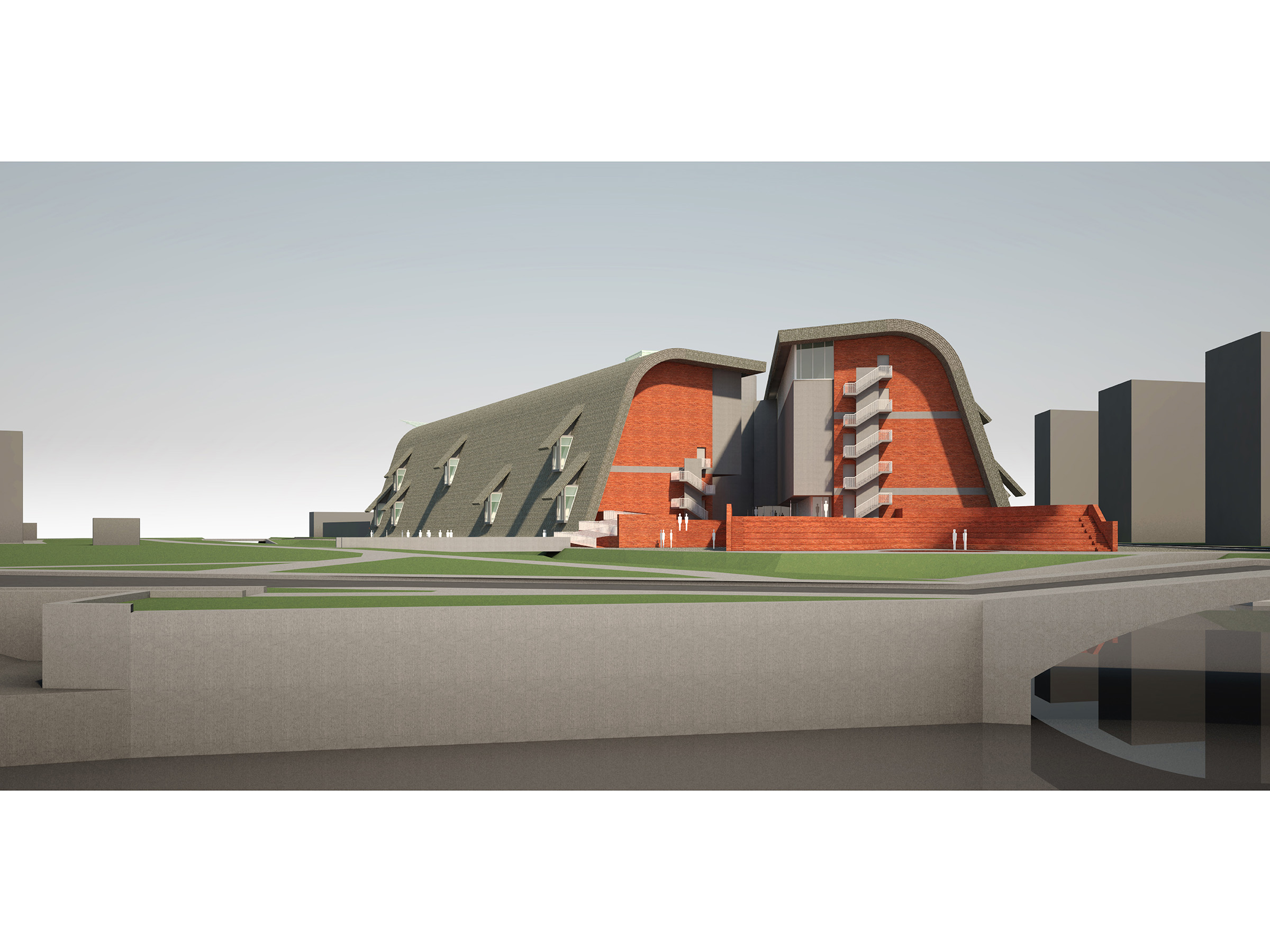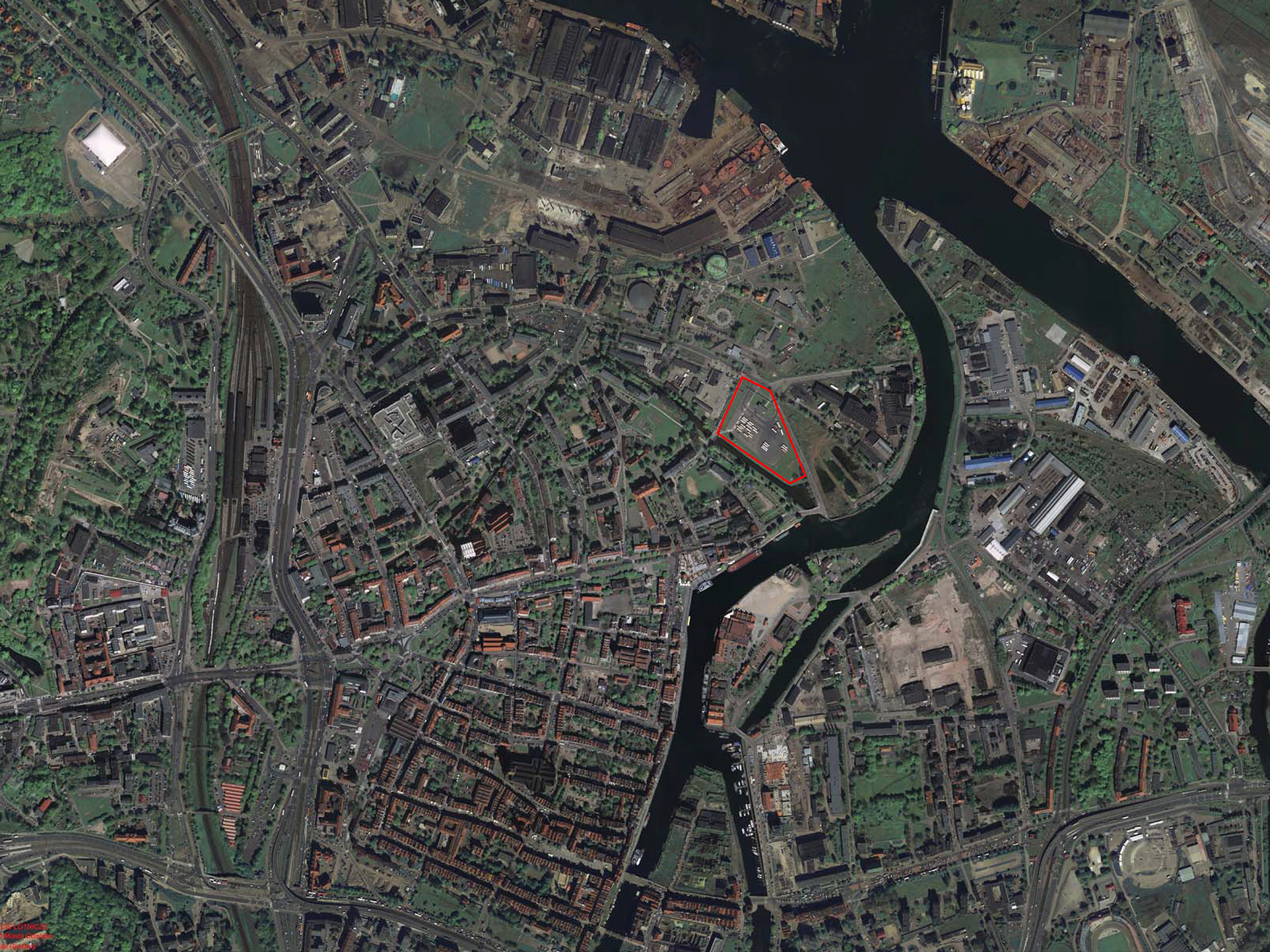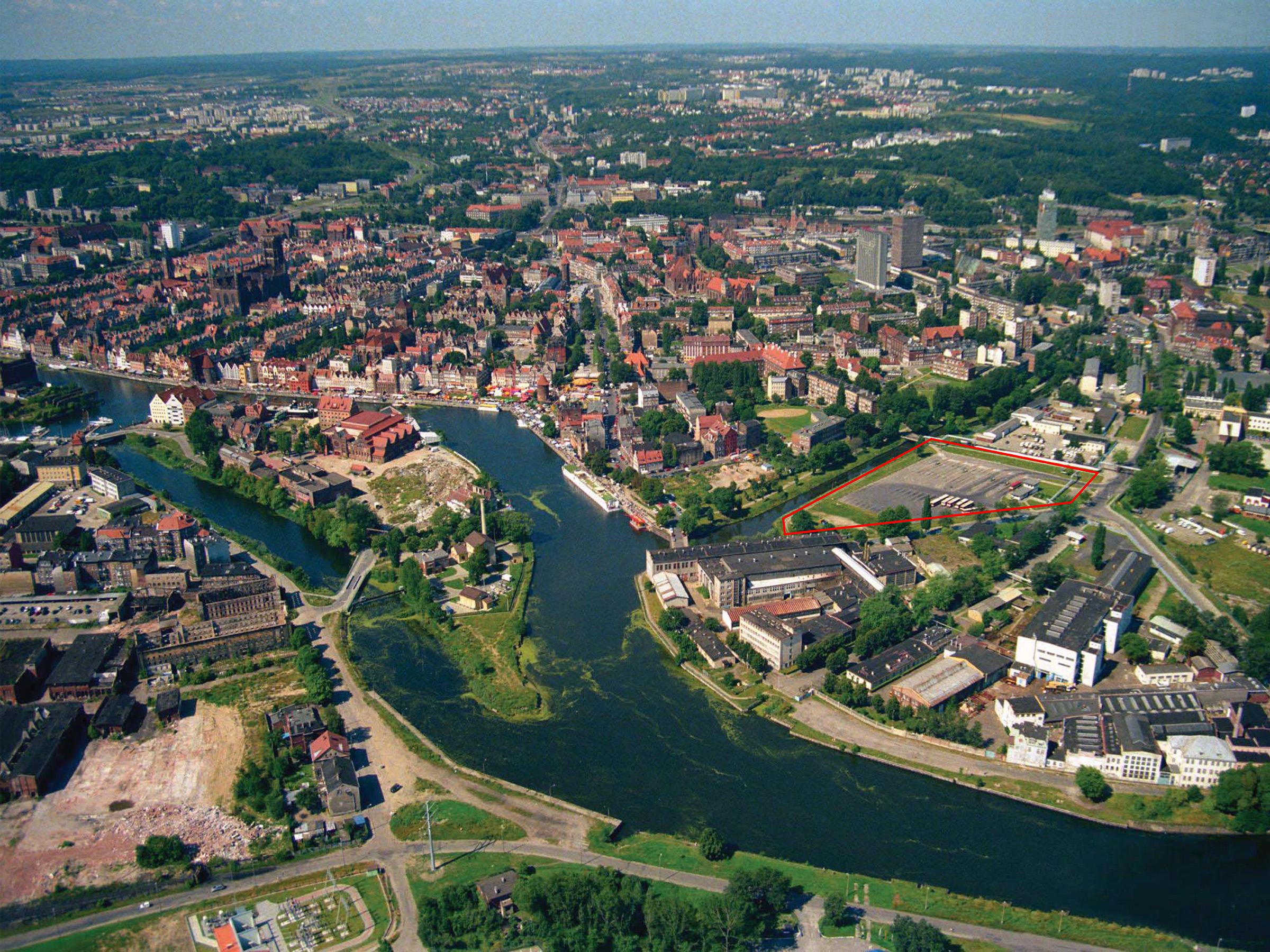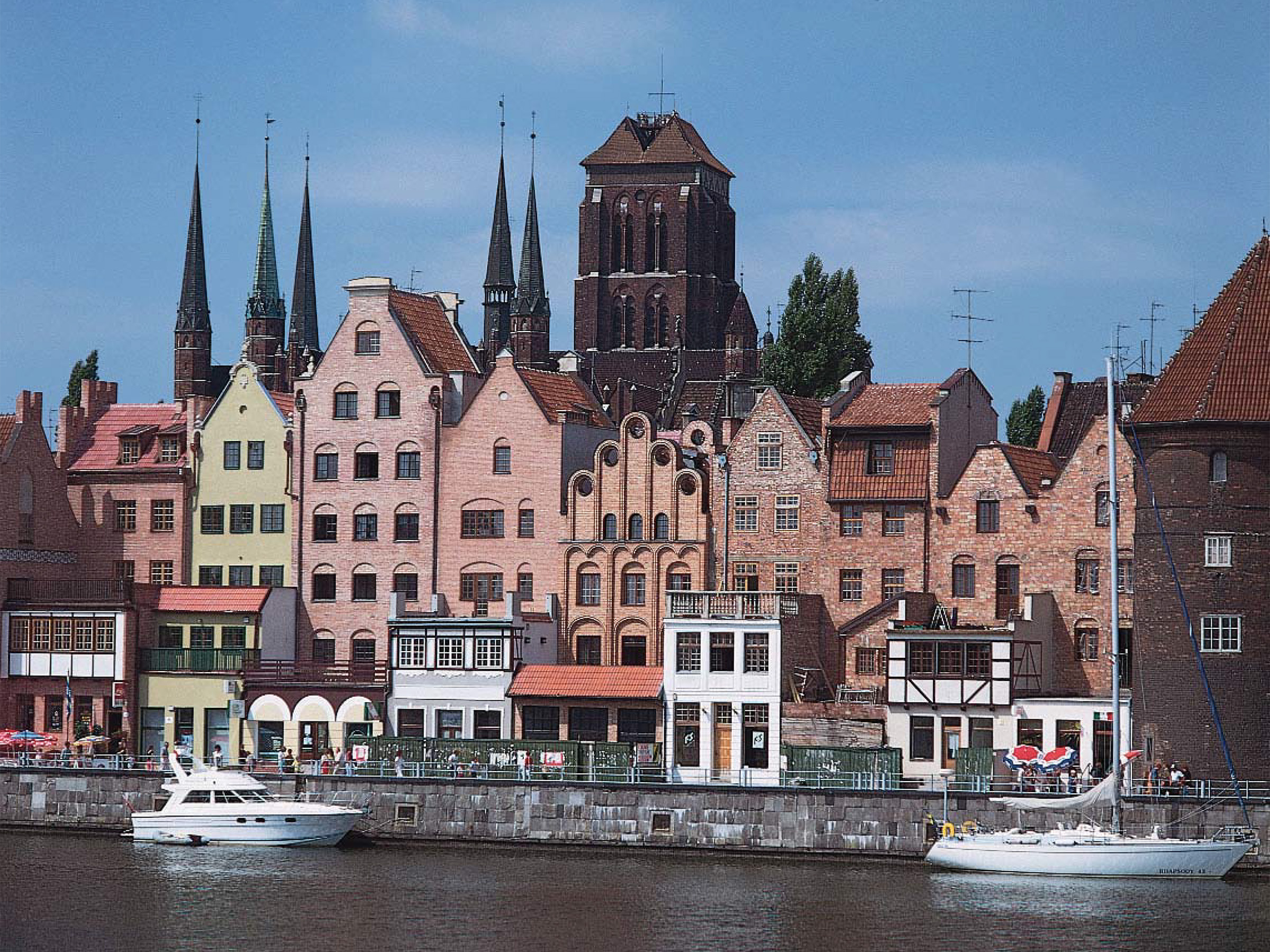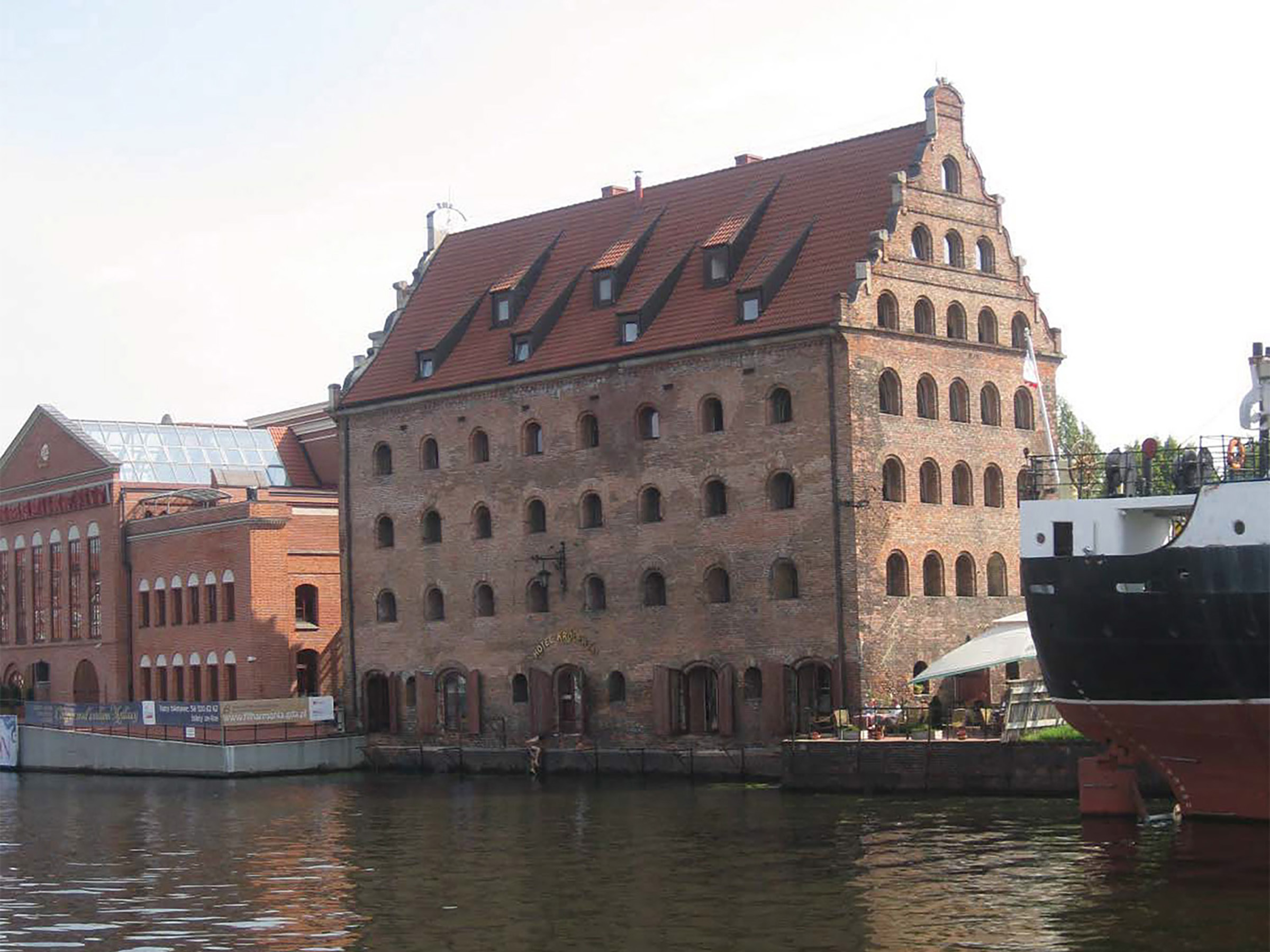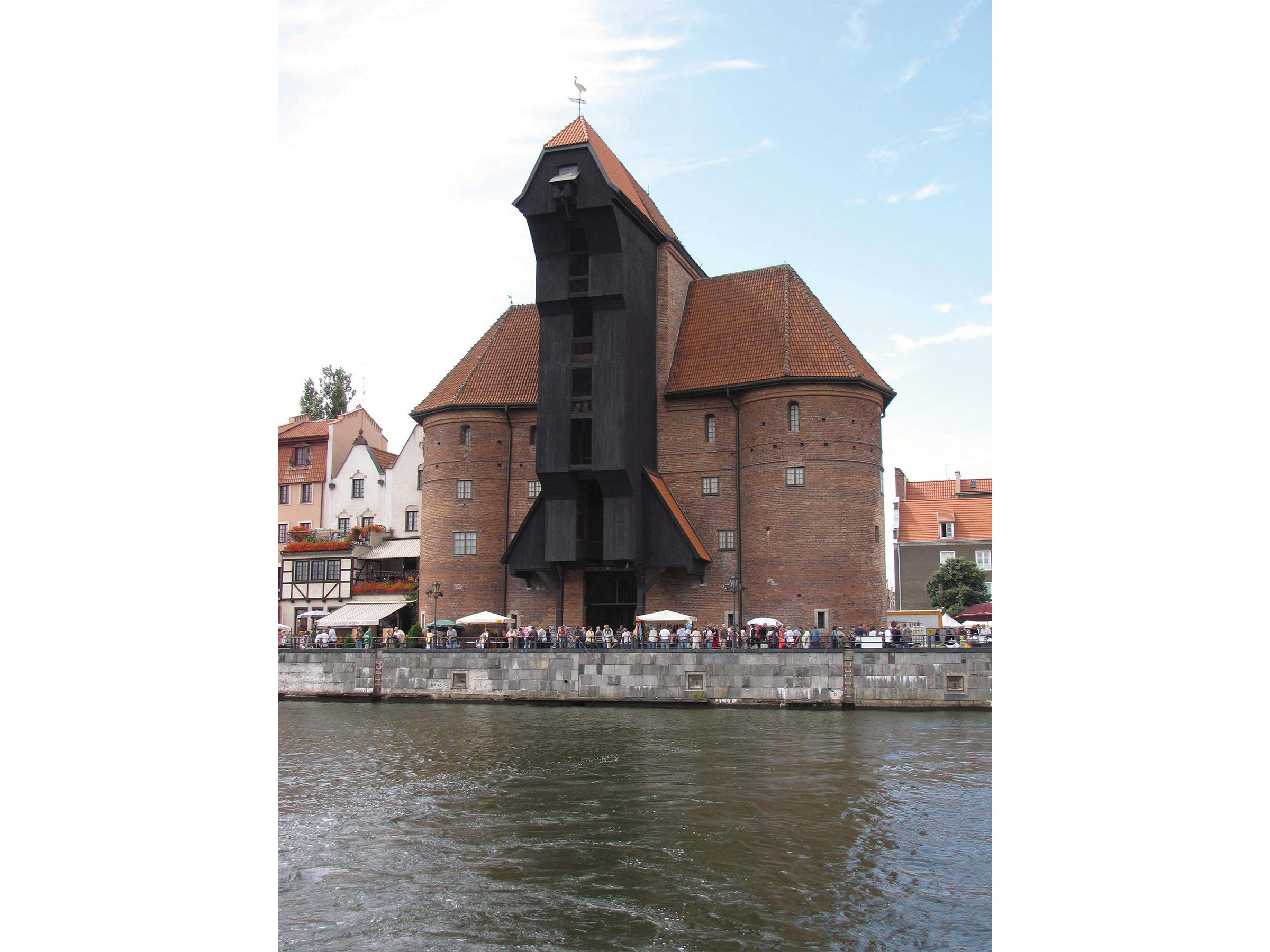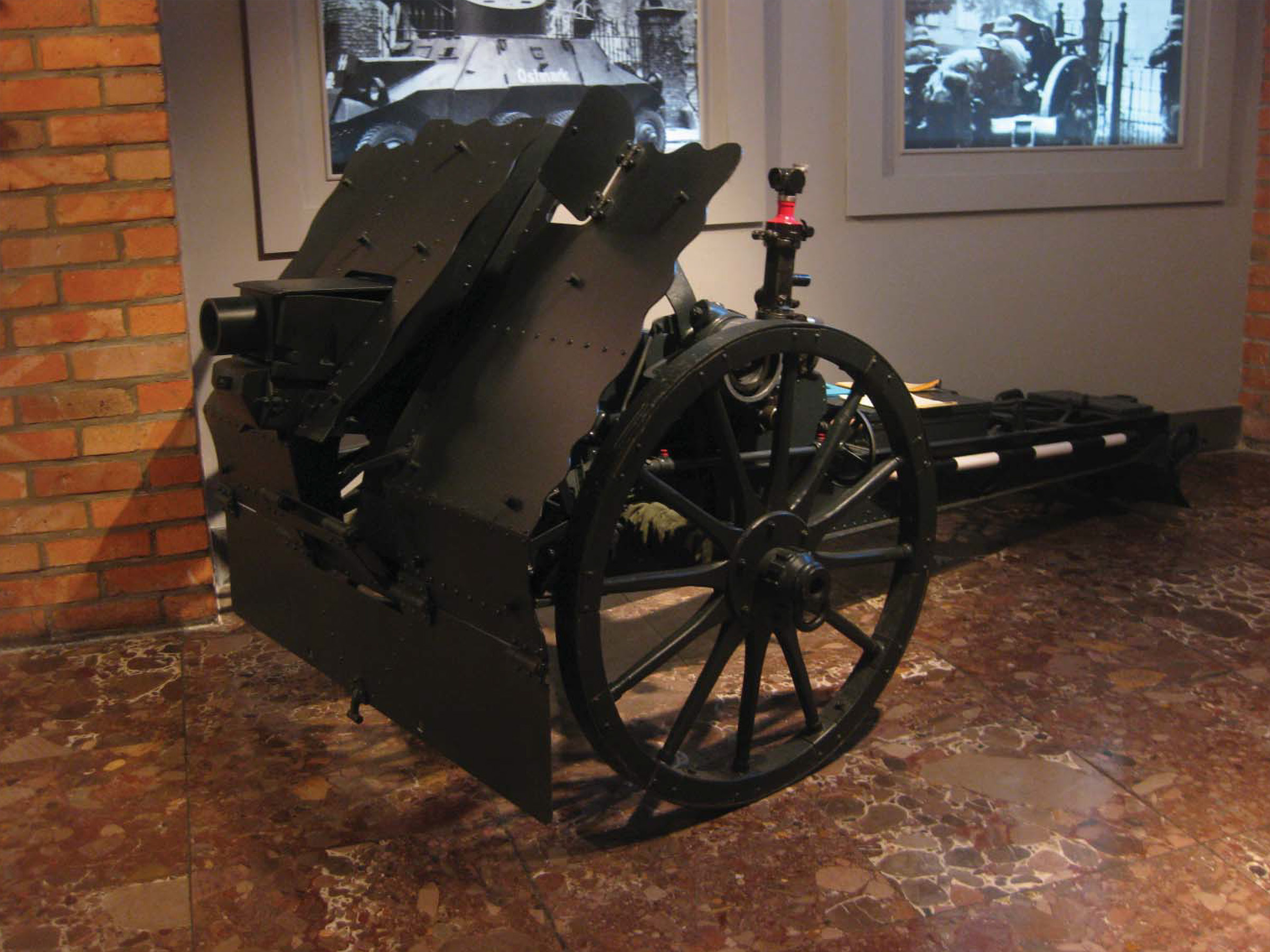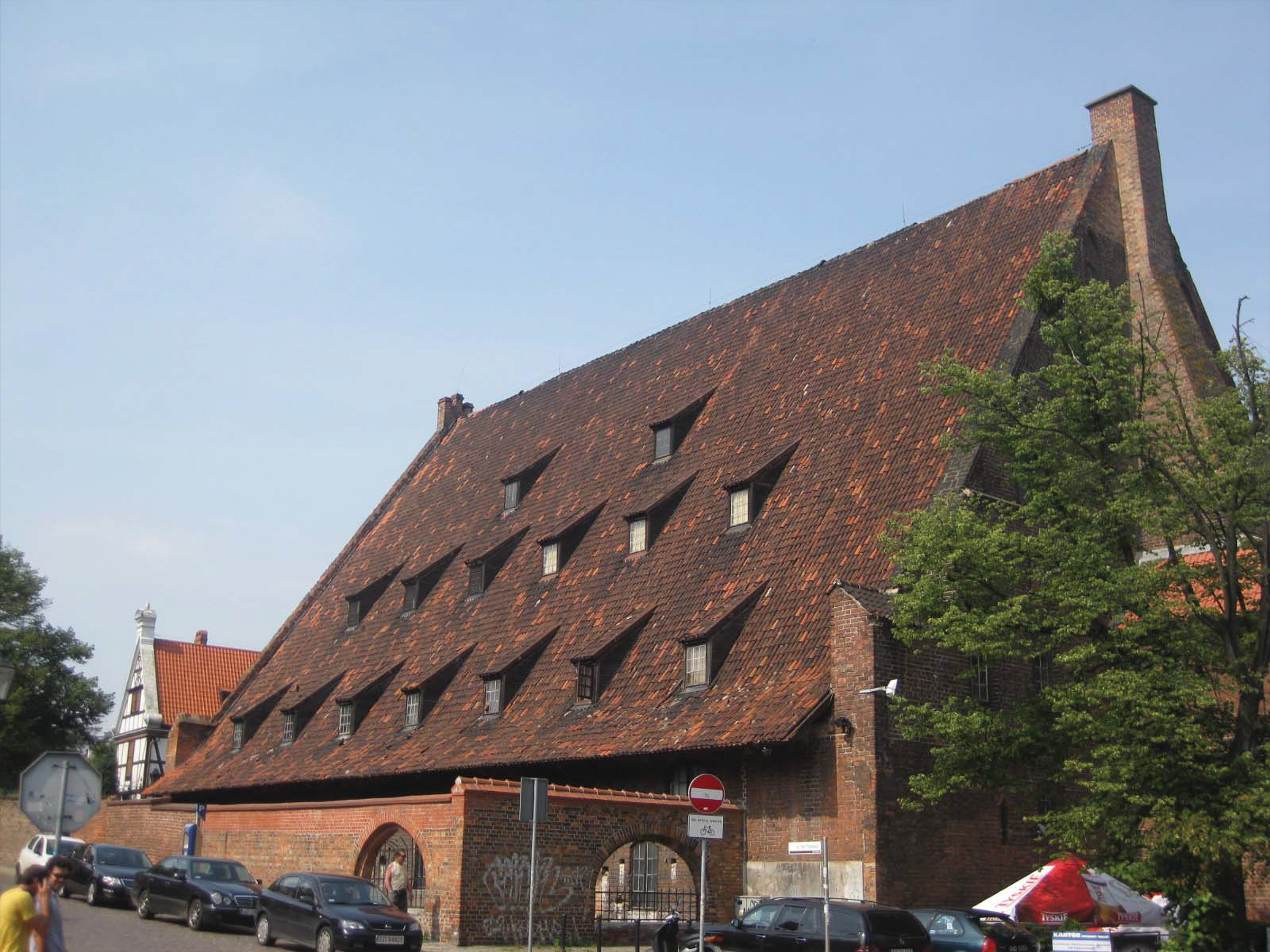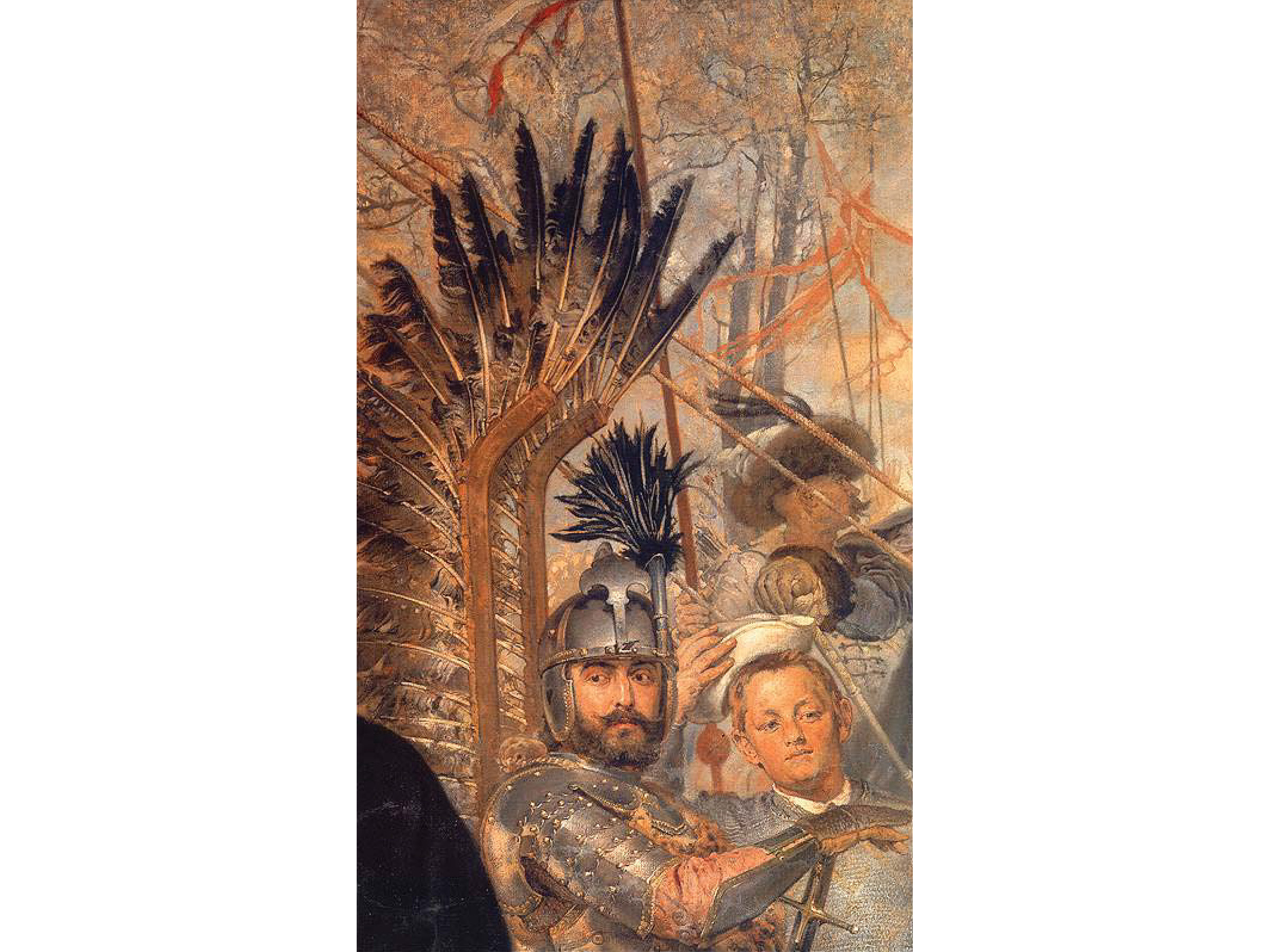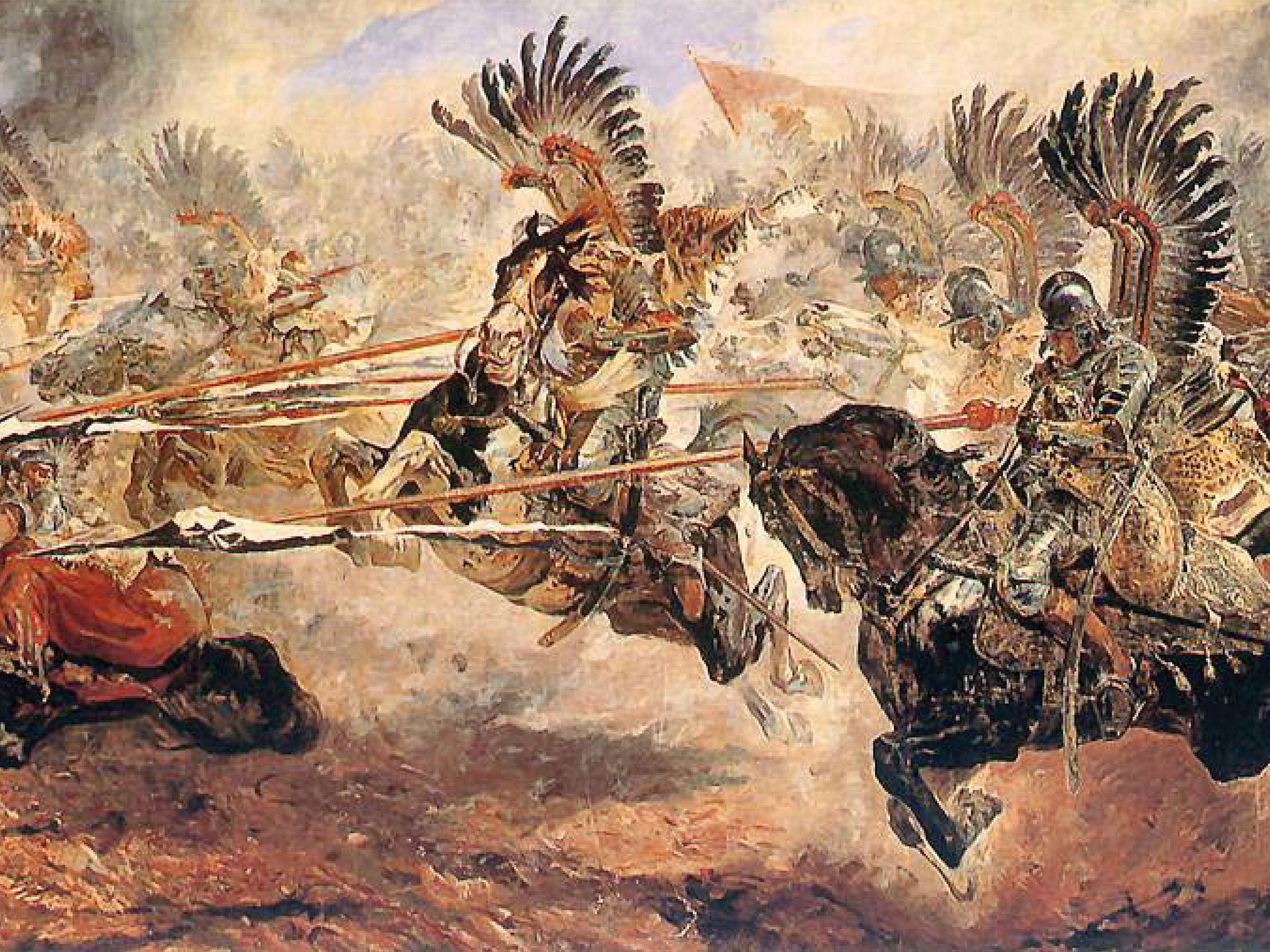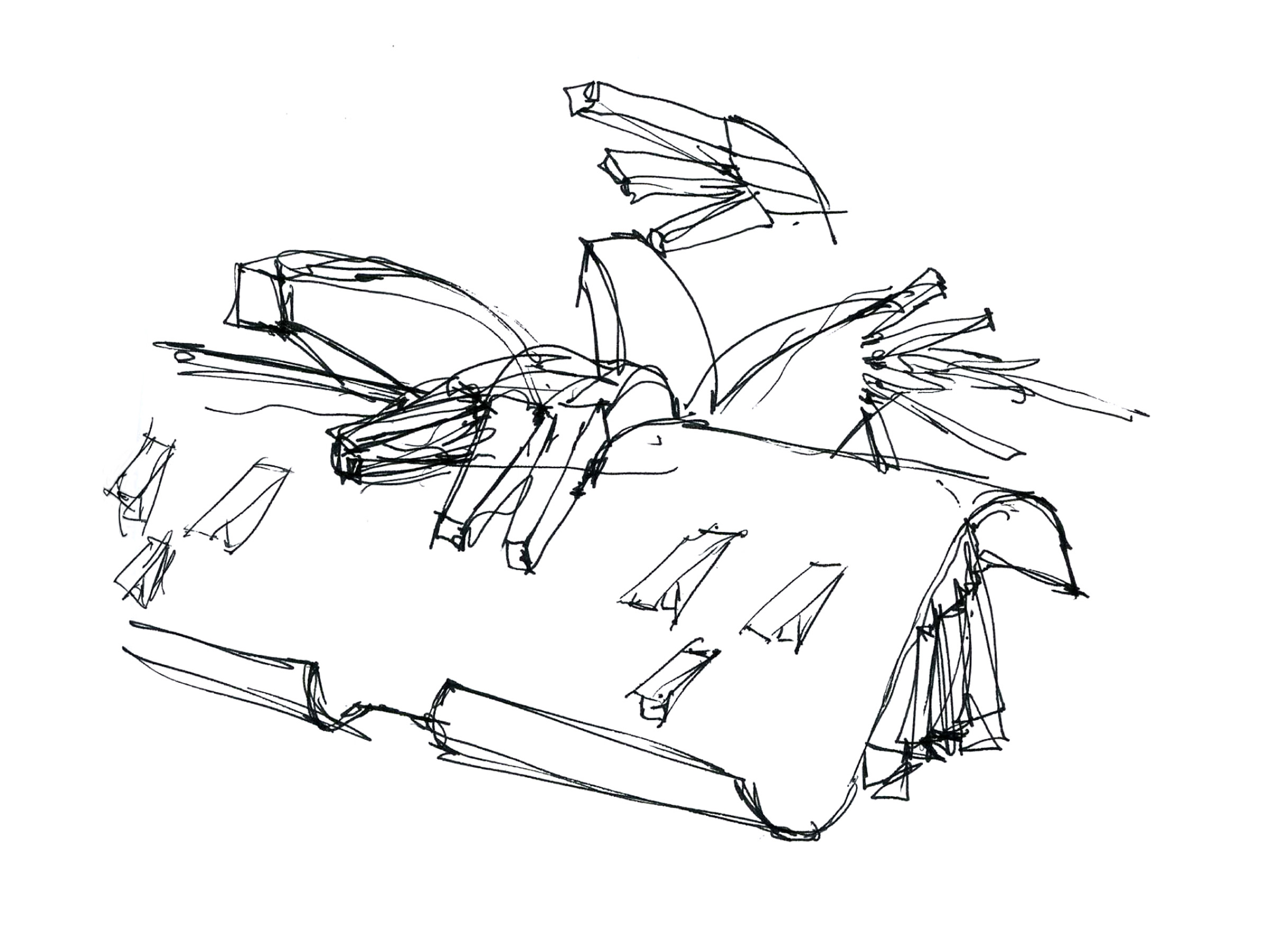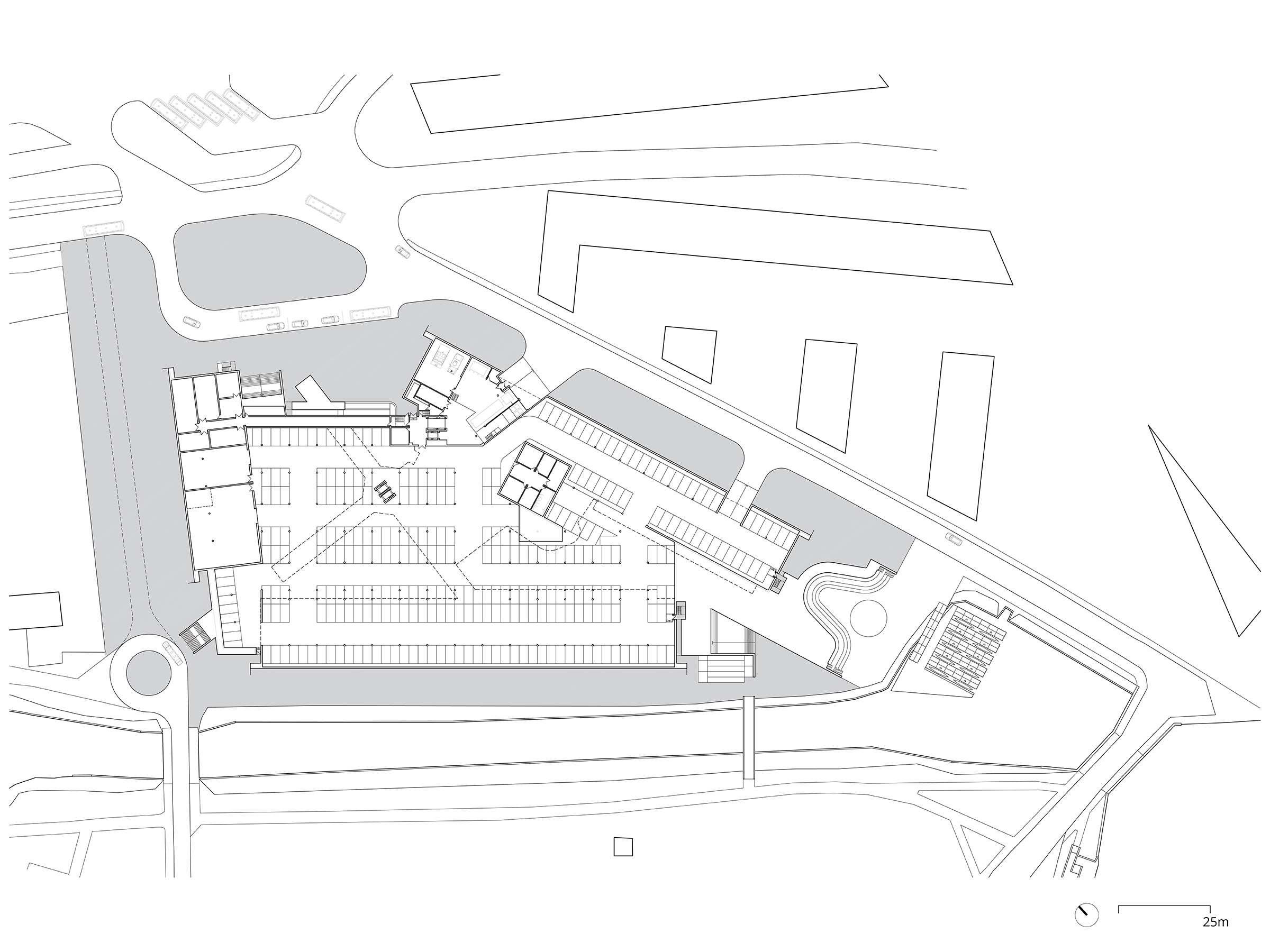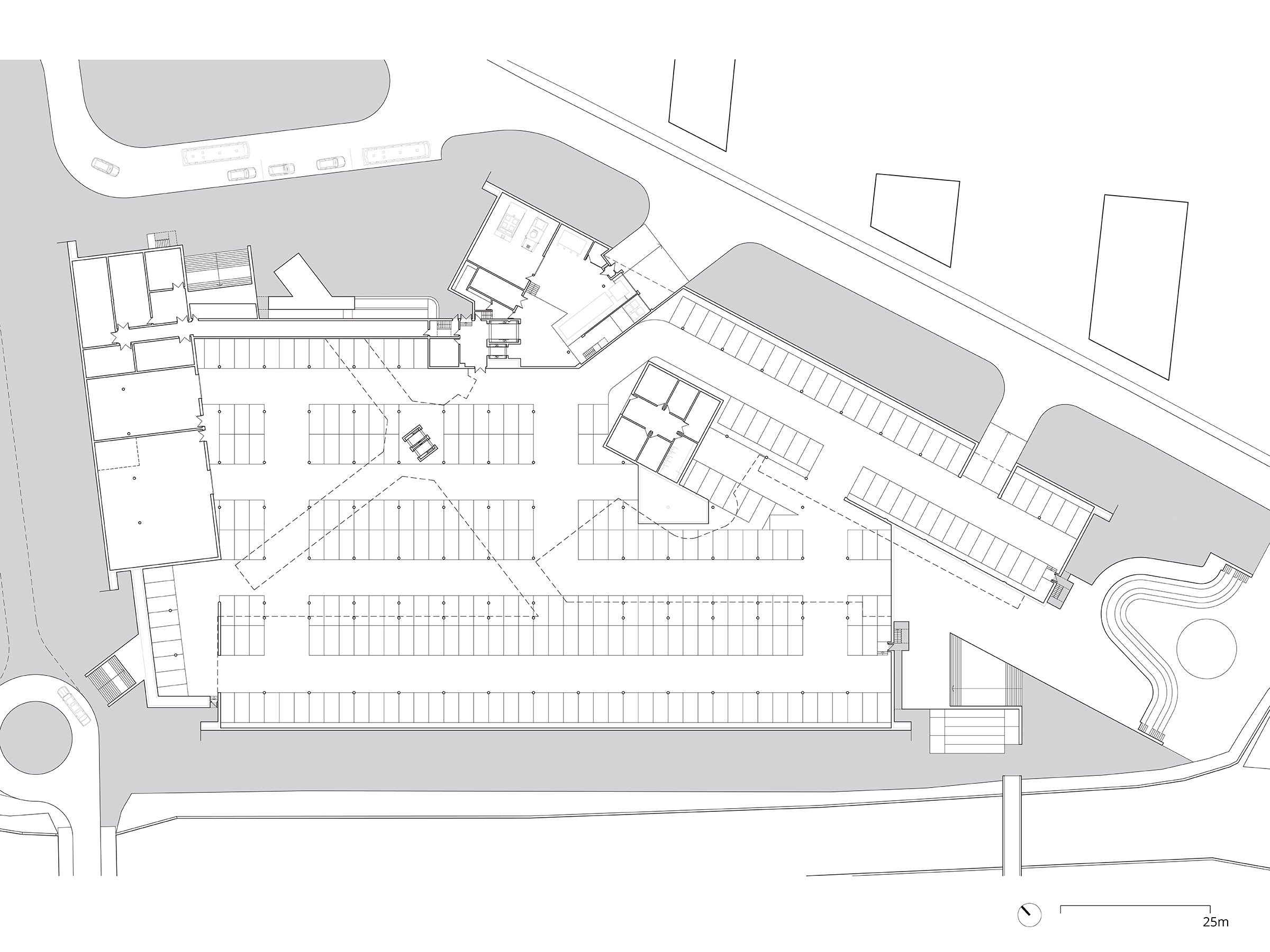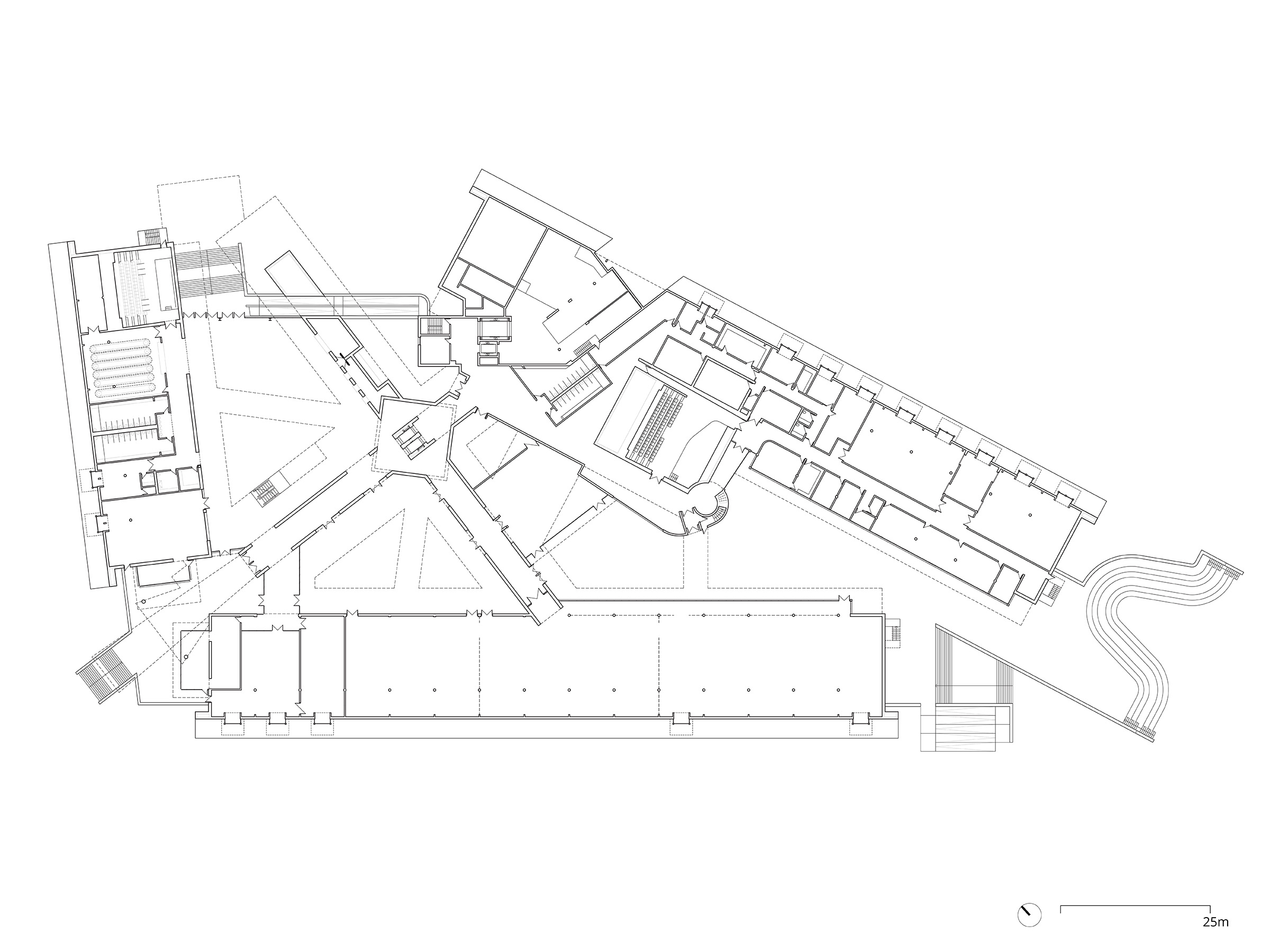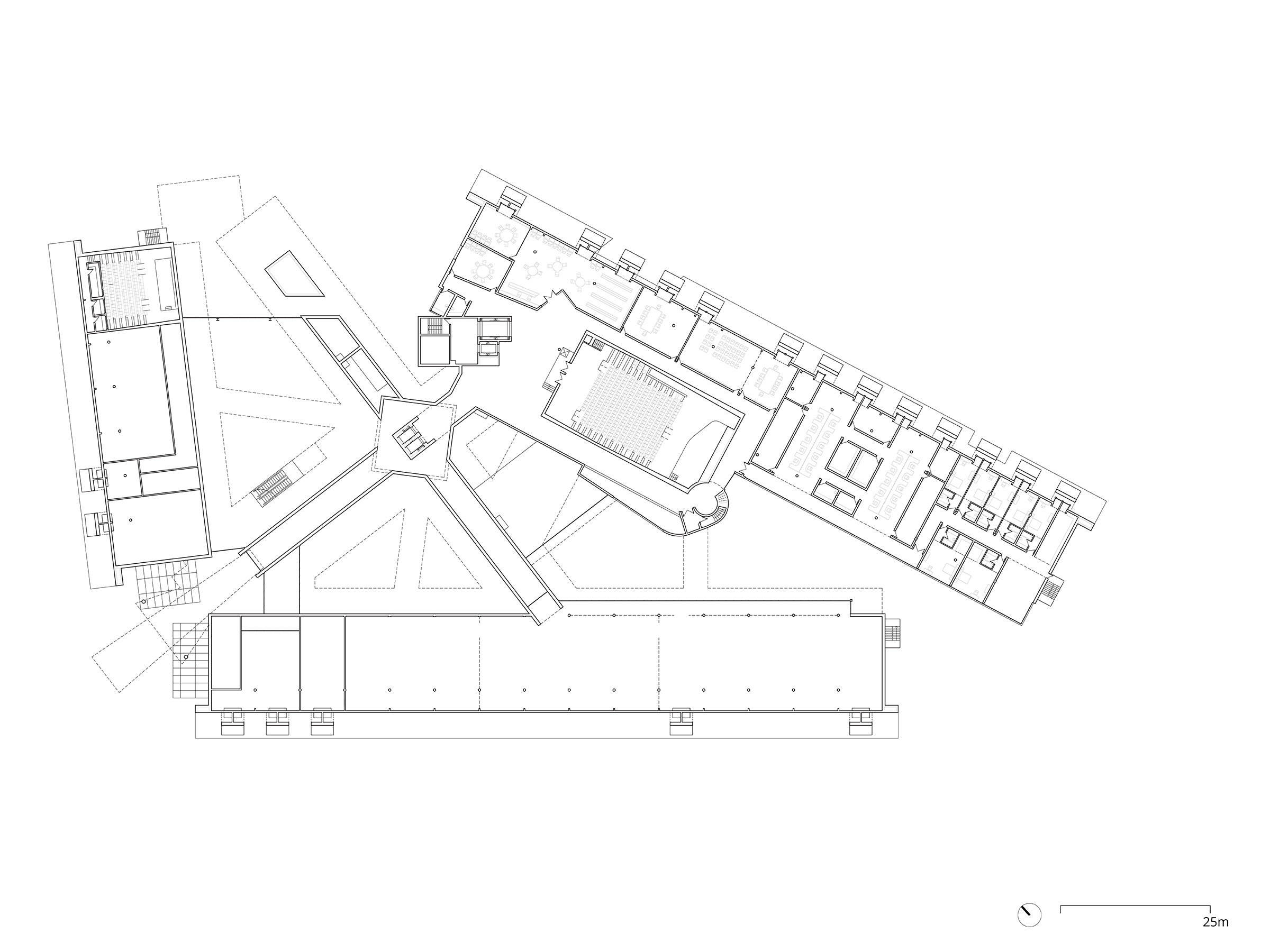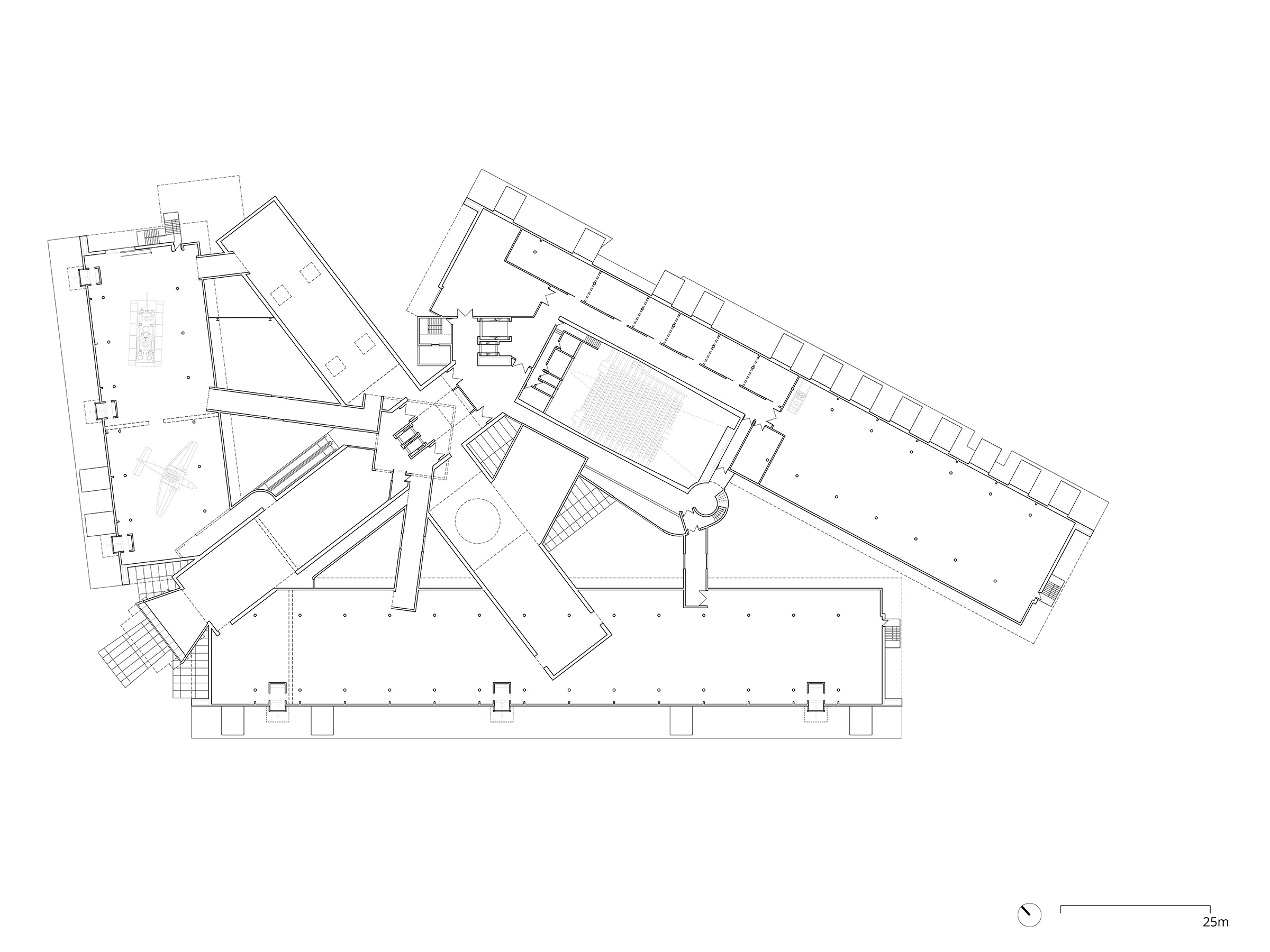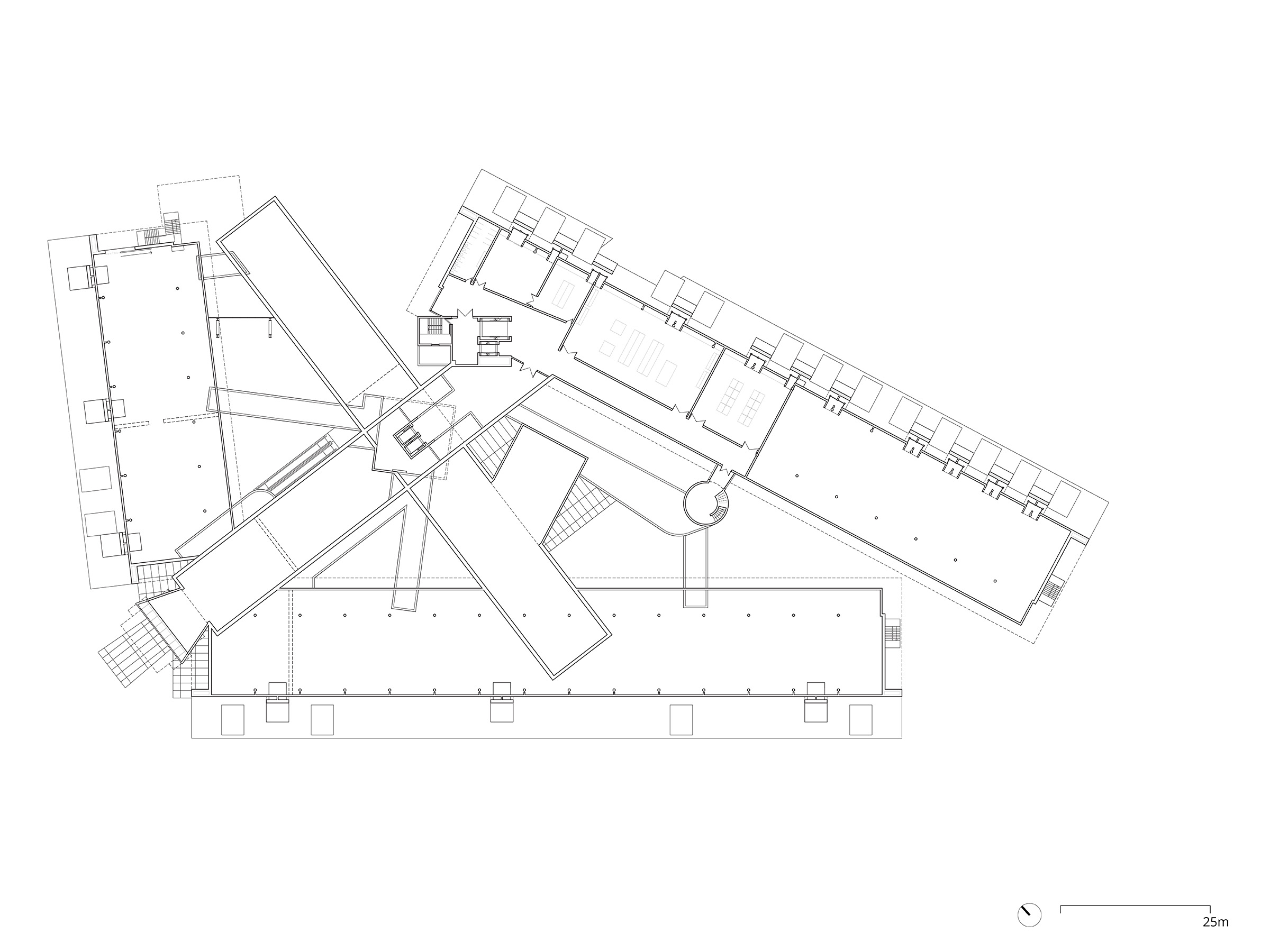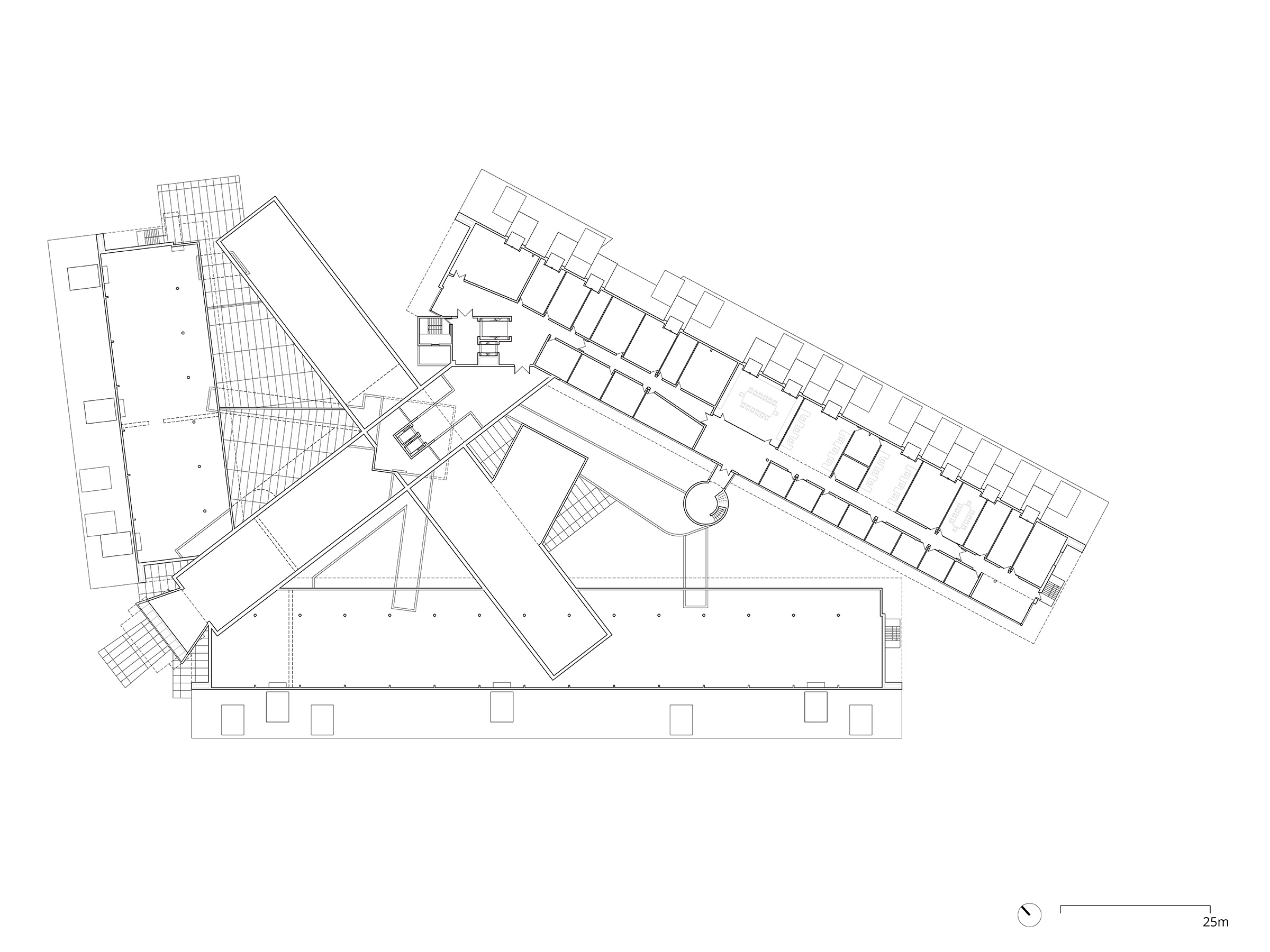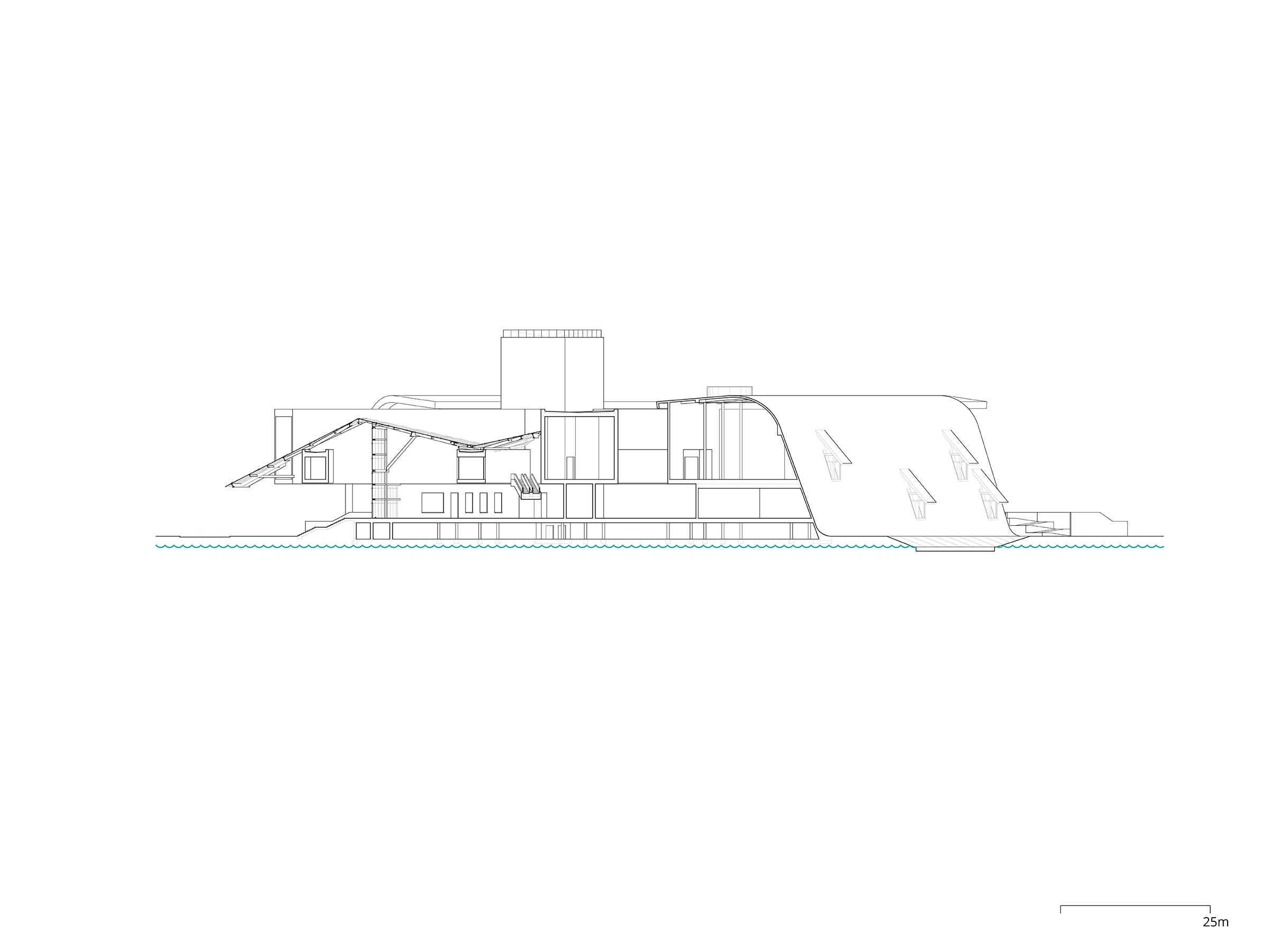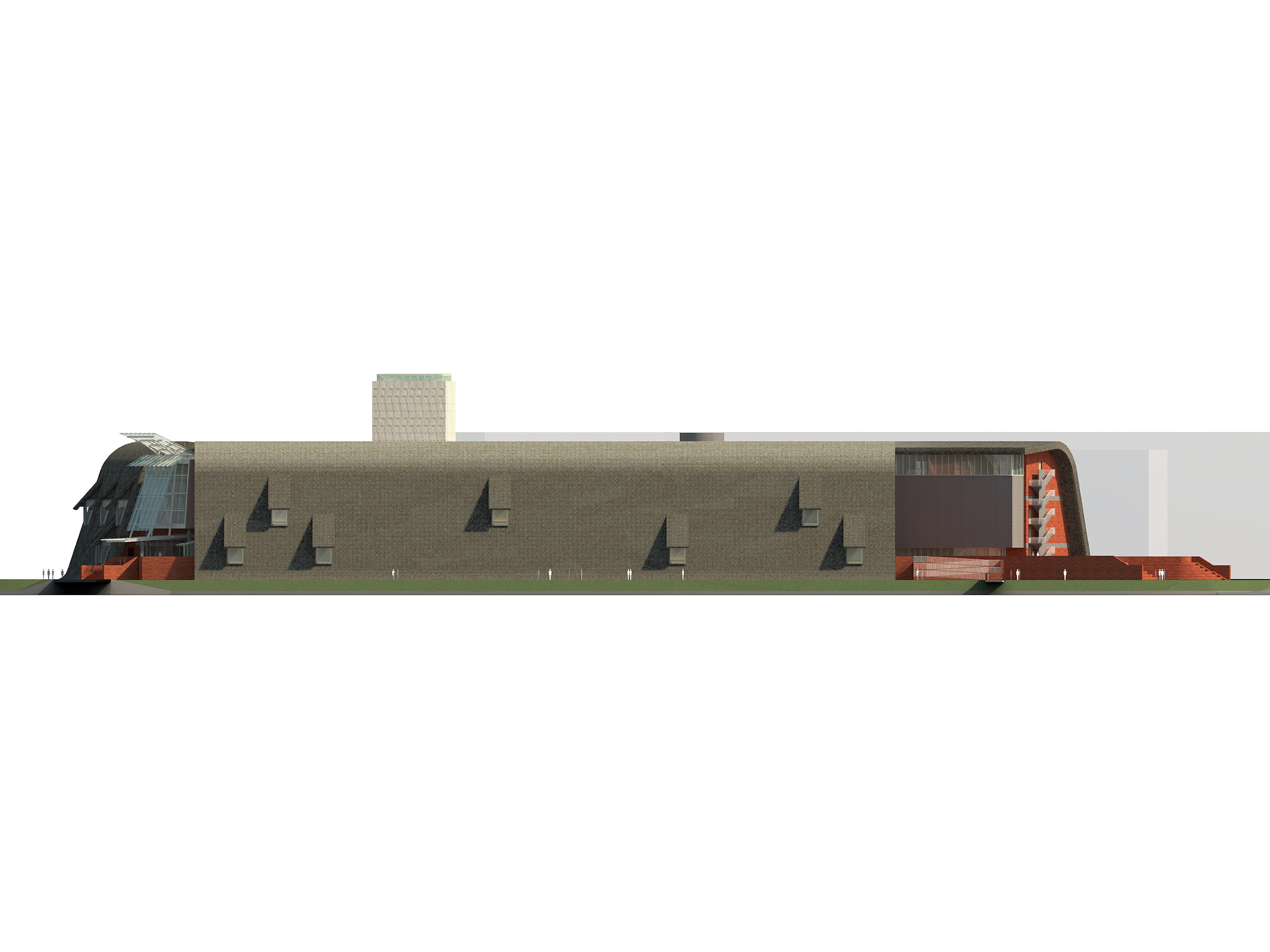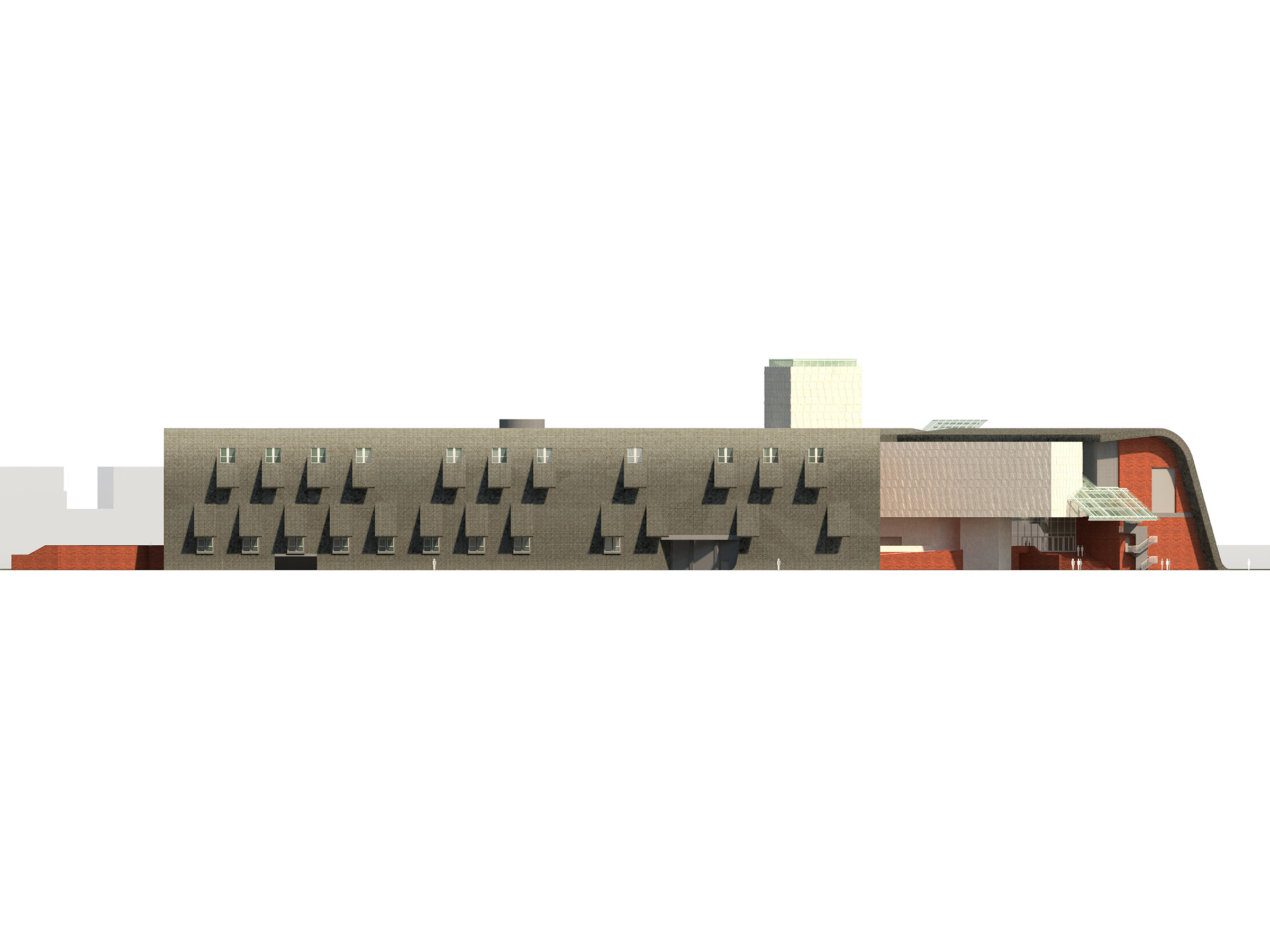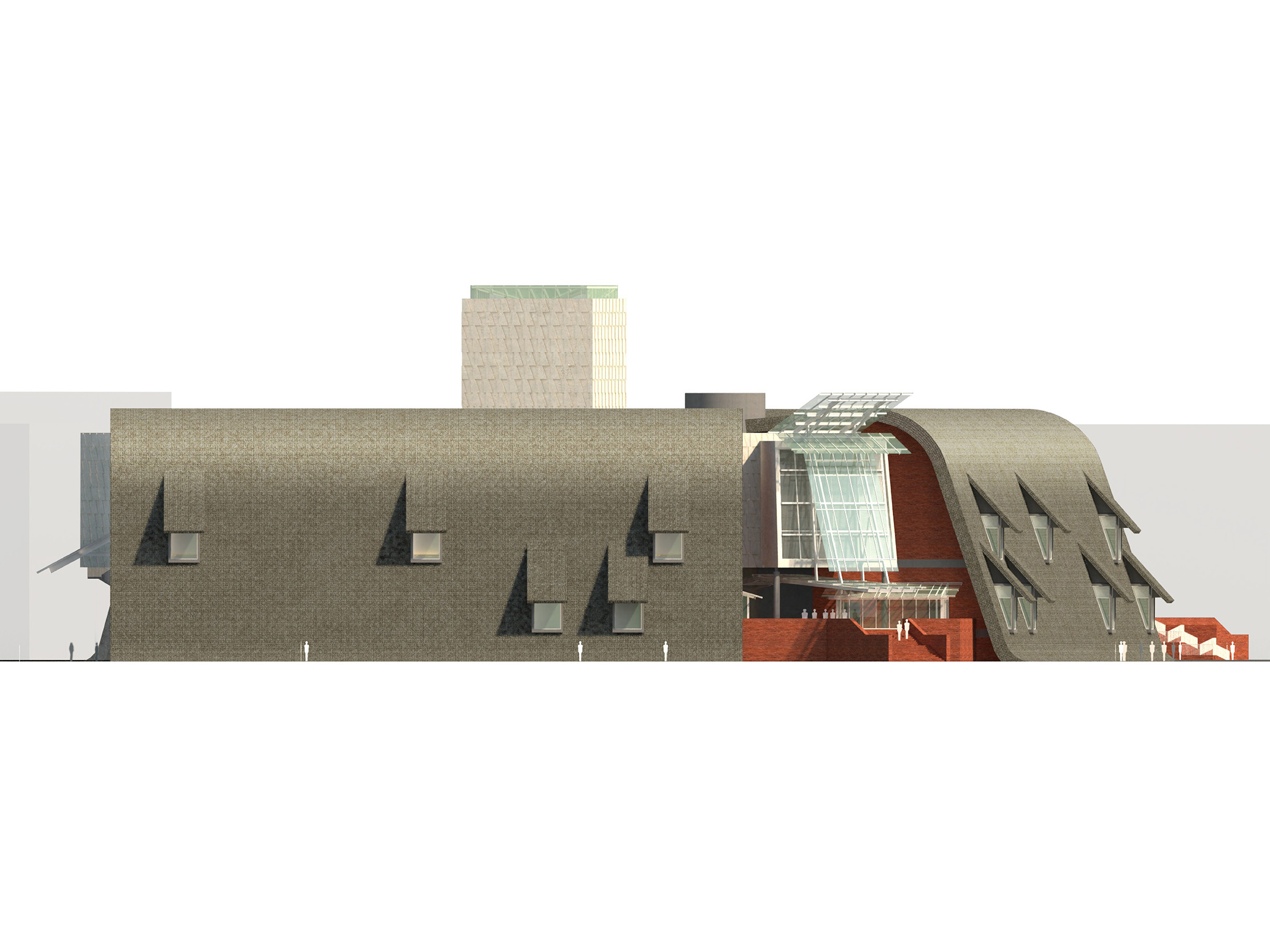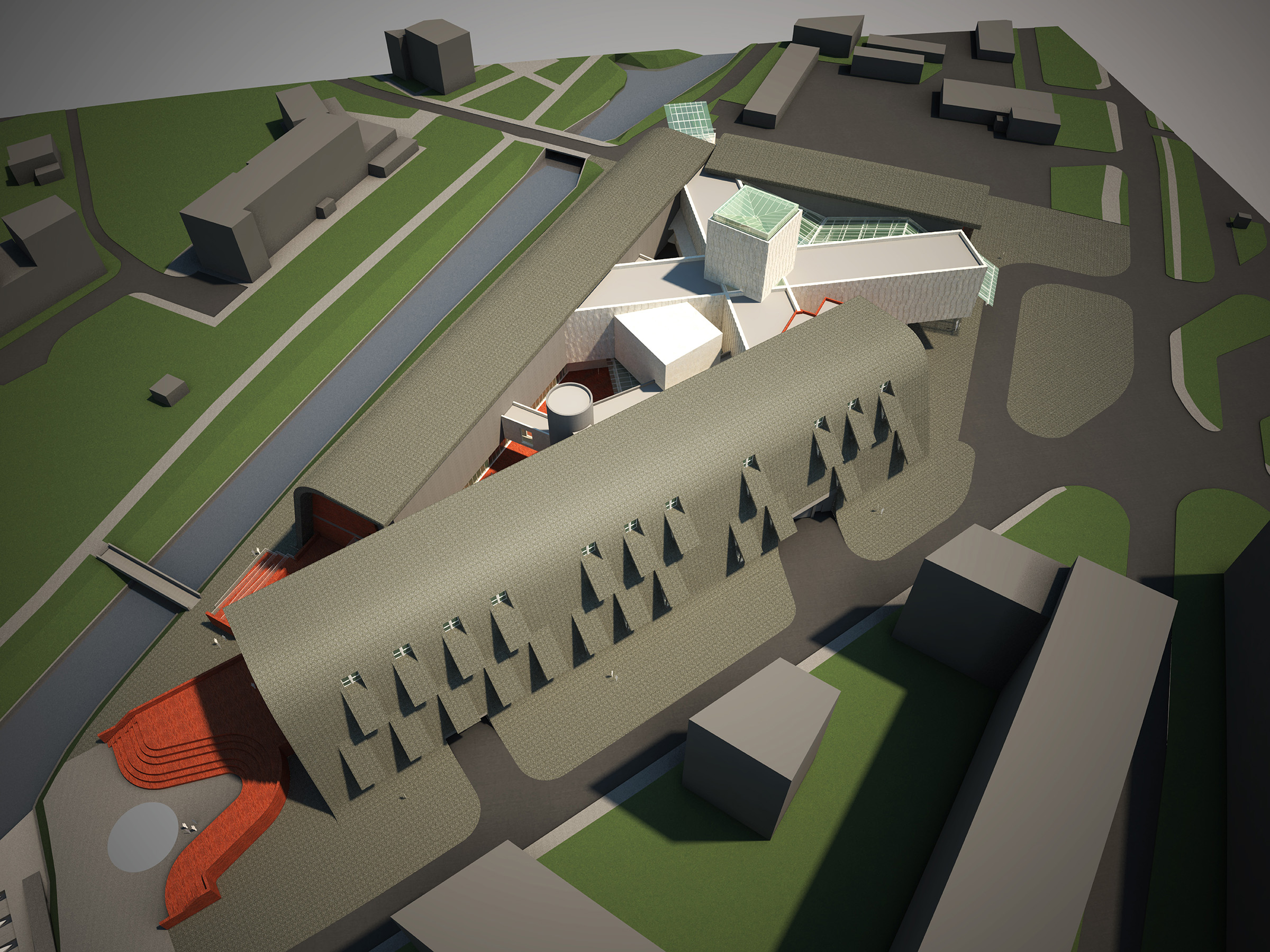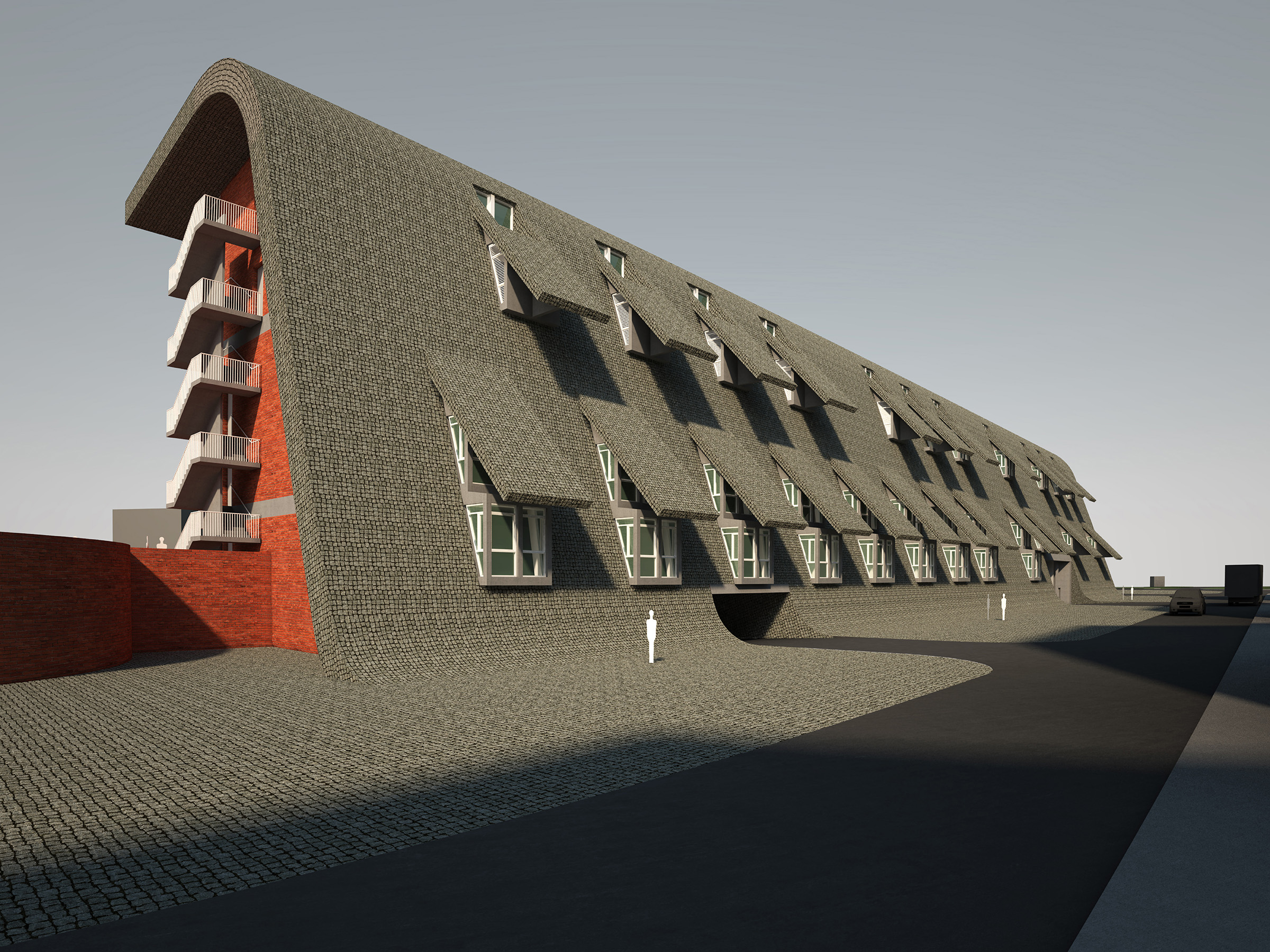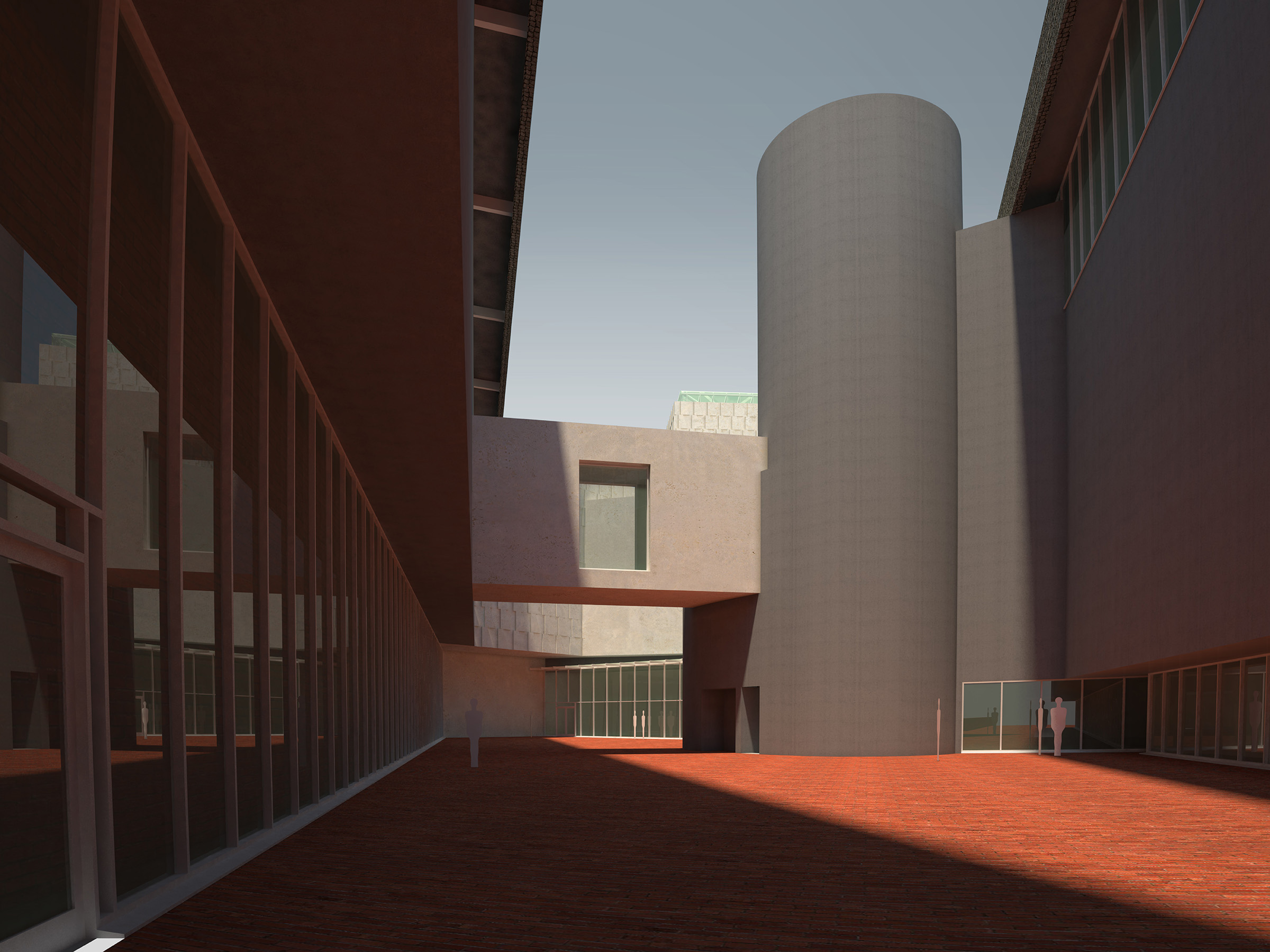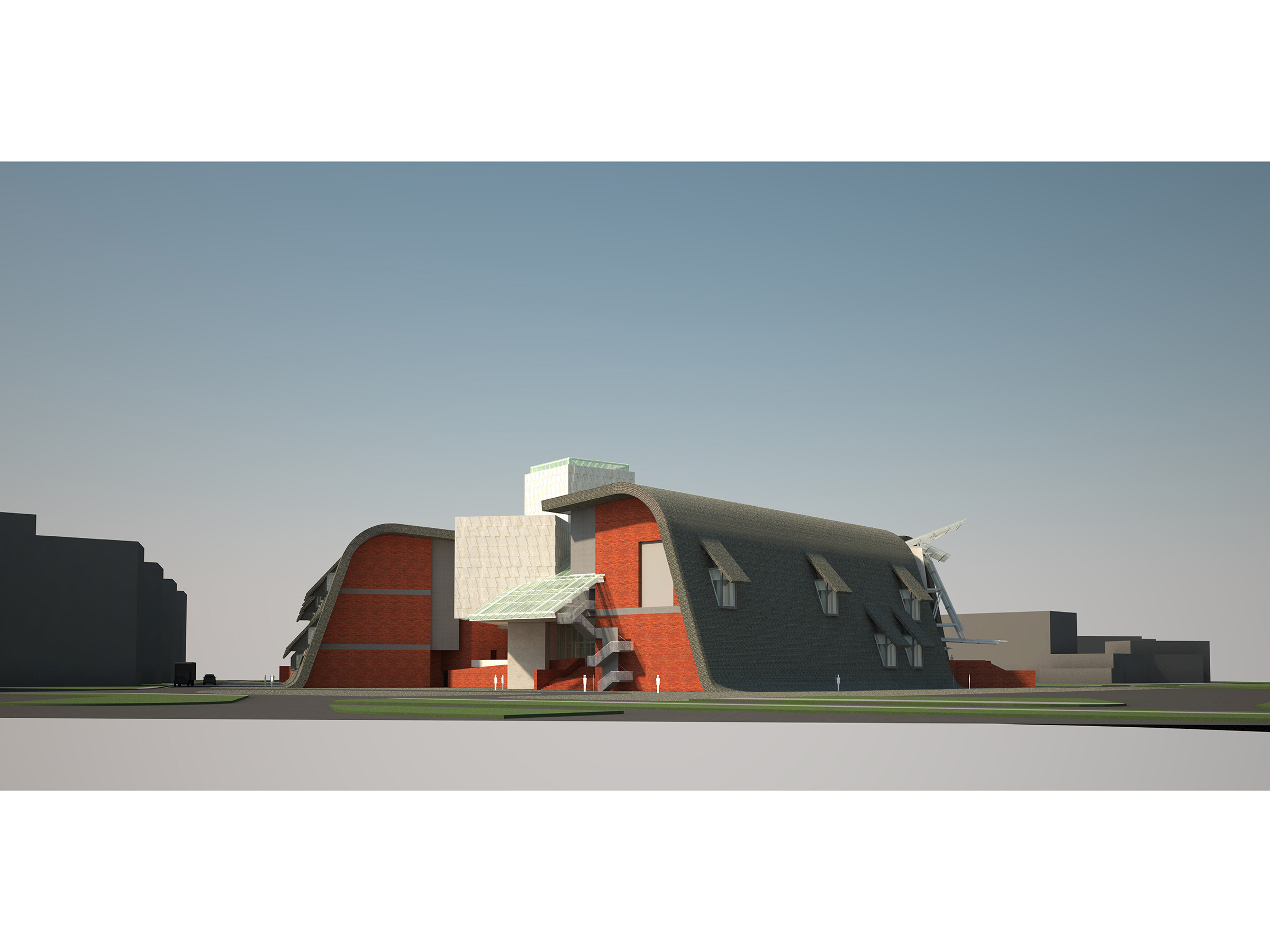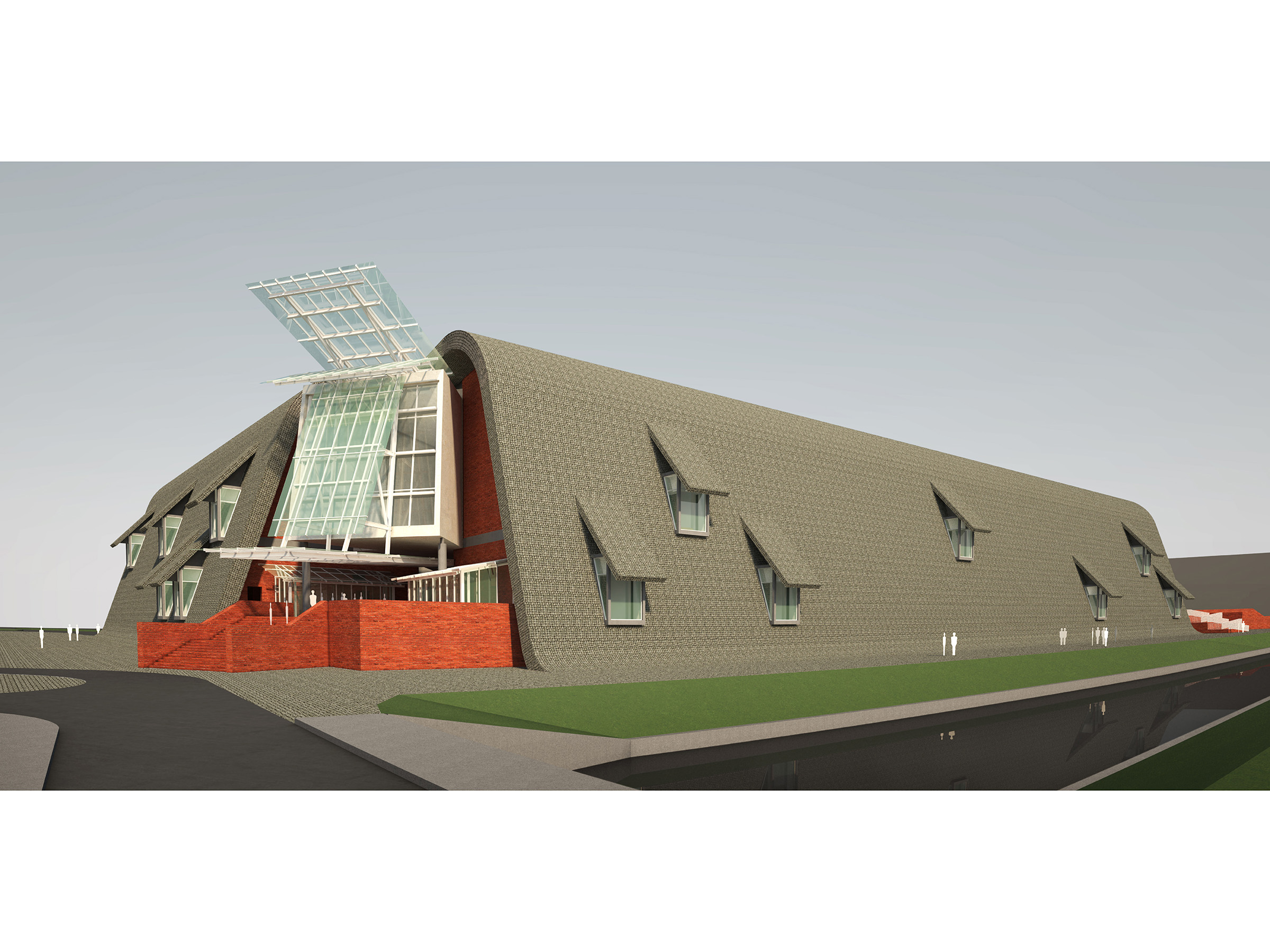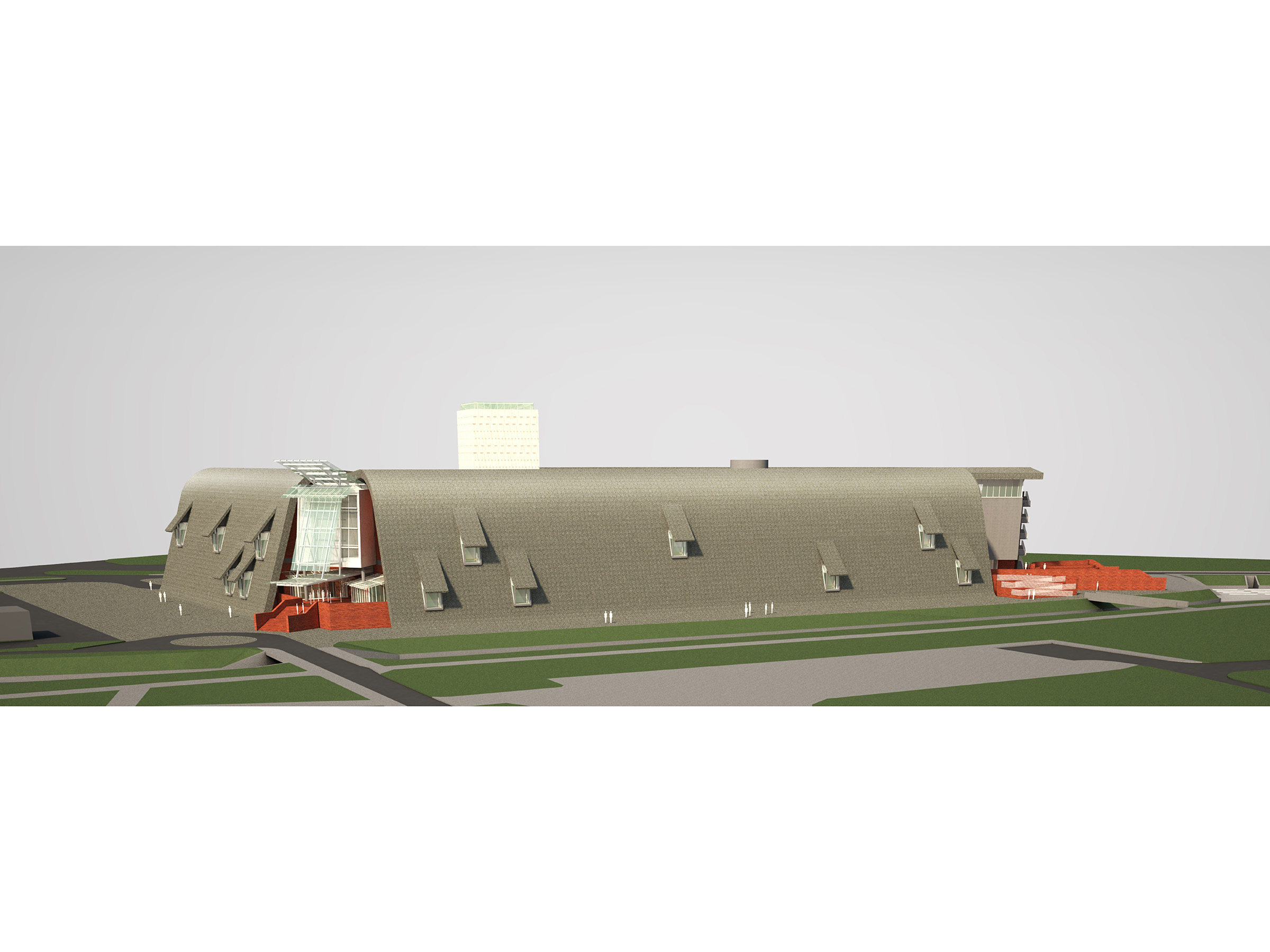The design concept for the Conceptual Design of the Museum of the Second World War in Gdańsk is rooted in a meditation on the idea of force. Force and its consequence, war, have and continue to be a fundamental aspect of human society. As the location of the outbreak of the Second World War in Europe, Gdańsk represents a historical and temporal setting in which a lasting dialogue about the nature of war and the desire of peace may be initiated.
It is these two poles of the human condition, war and peace, and their corresponding manifestations in human nature, the destructive and the creative, which the Museum of the Second World War will seek to embody. In this regard, the design concept for the museum may be seen as a reenactment in spatial terms of force’s cycle of destruction and dispersion, creation and hope.
The design process for the proposed museum begins with the formation of wave shapes located around the borders of the site. These shapes swell and crest into waves as the will to violence becomes unavoidable. The simultaneous action of the waves from several directions is emblematic of the historic and contemporary forces of aggression to which the Polish people have been subjected. The waves collide with the ordered objects of society represented by the museum program, overwhelming some and dispersing others towards the center of the site. Finally, these objects are collected and transformed into a bold figural and symbolic presence. This central figure, serving as the nexus and focus of the Museum of the Second World War, has strong associations with the fundamentally creative act of peace and reconciliation as the necessary and ultimate counterbalance to the destructive impact of war. The orientation of the central figure along the cardinal directions reinforces the connection between the creative act of peace and a universal order.
A formal and gestural language has been developed for the Museum of the Second World War which references the unique context, culture and history of Poland. The armor of the iconic Polish Hussar, the dormer windows of many traditional and medieval buildings in Gdańsk, and the stabilizing cross shape are sources of formal and symbolic inspiration. The transformation and synthesis of these elements through the design process results is an expression which is at once contemporary and connected to its cultural context, reflecting the vibrancy and history of the Polish people.
awards:
2012 TSA Studio Award
